After we dropped Nicole and Srul at the station we had 4 nights before we were meeting up with friends Linda and Sid from Dorset down on the Algarve coast.
Our first stop was a surf beach just south of Sines. We’d passed it before and knew we could park up for free for the night. It was a good spot and I thought there was a couple of cafes open but they all turned out to be closed at this time of year.
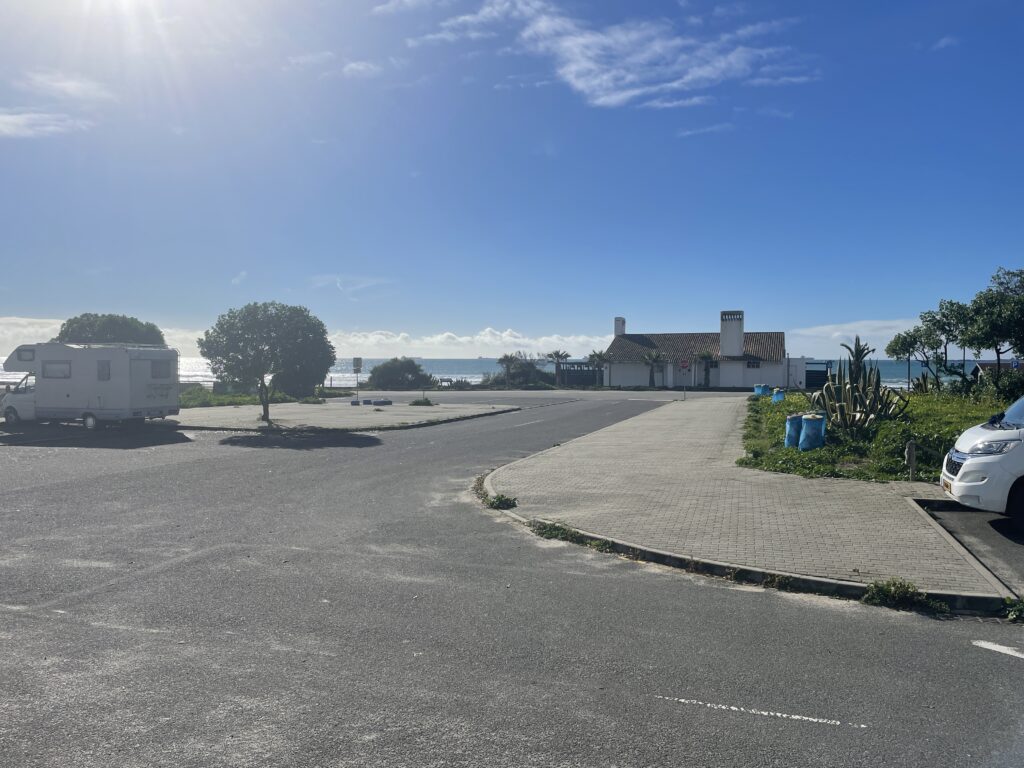
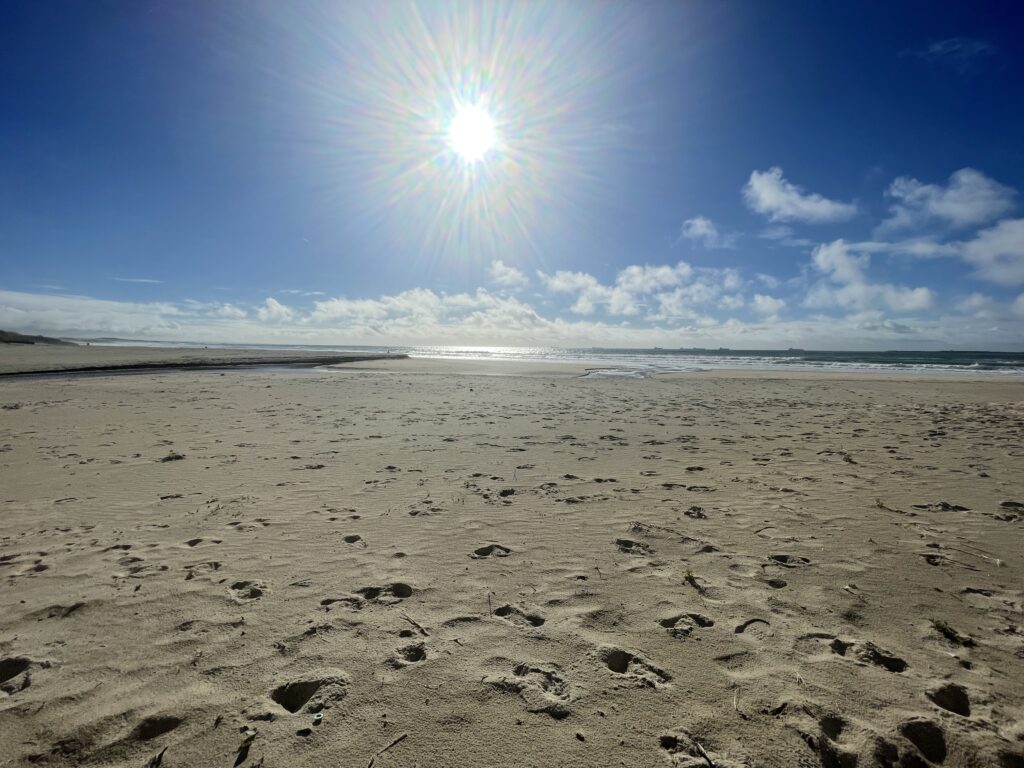
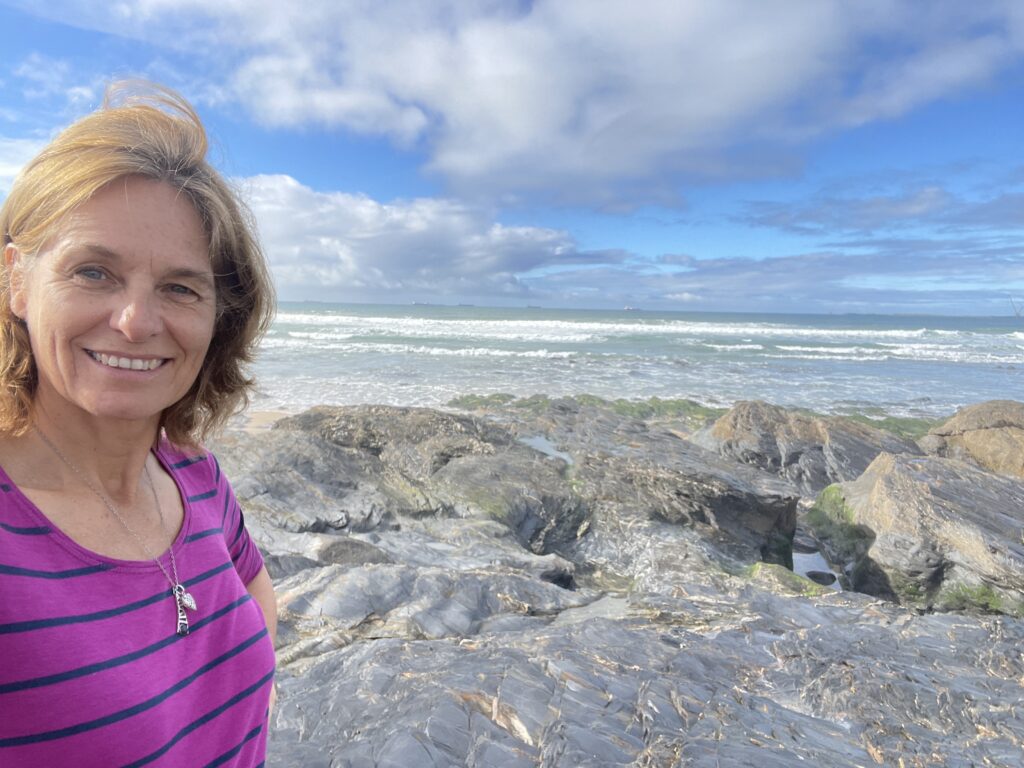
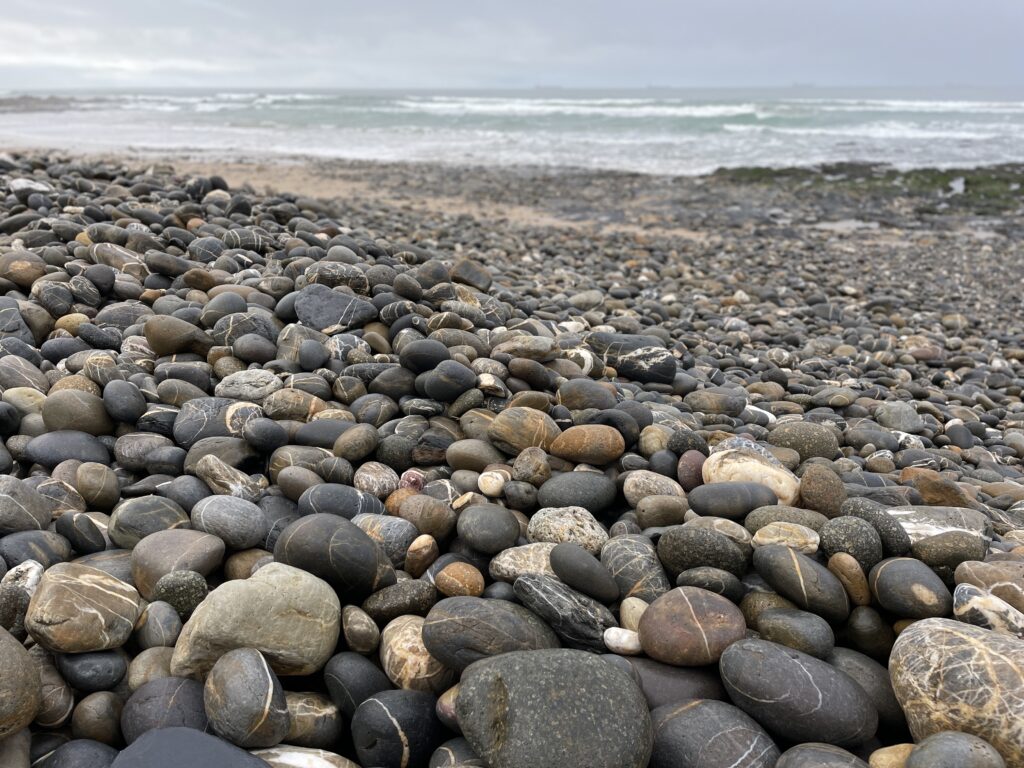
Regardless I enjoyed my walk along the beach, the long natural sandy paradise that we had got used to changed to a mixture of smooth bays and rocky formations. The volcanic rock has a high mineral content so the rocks form amazing colours and shapes in the sand. This area is apparently popular for divers due to the diversity of the marine life found here in the rock pools. It was fun too to watch the surfers who all arrived at the same time rushed out to sea in their wetsuits with their boards for about an hour caught a wave or two but spent most of the time waiting out at sea!
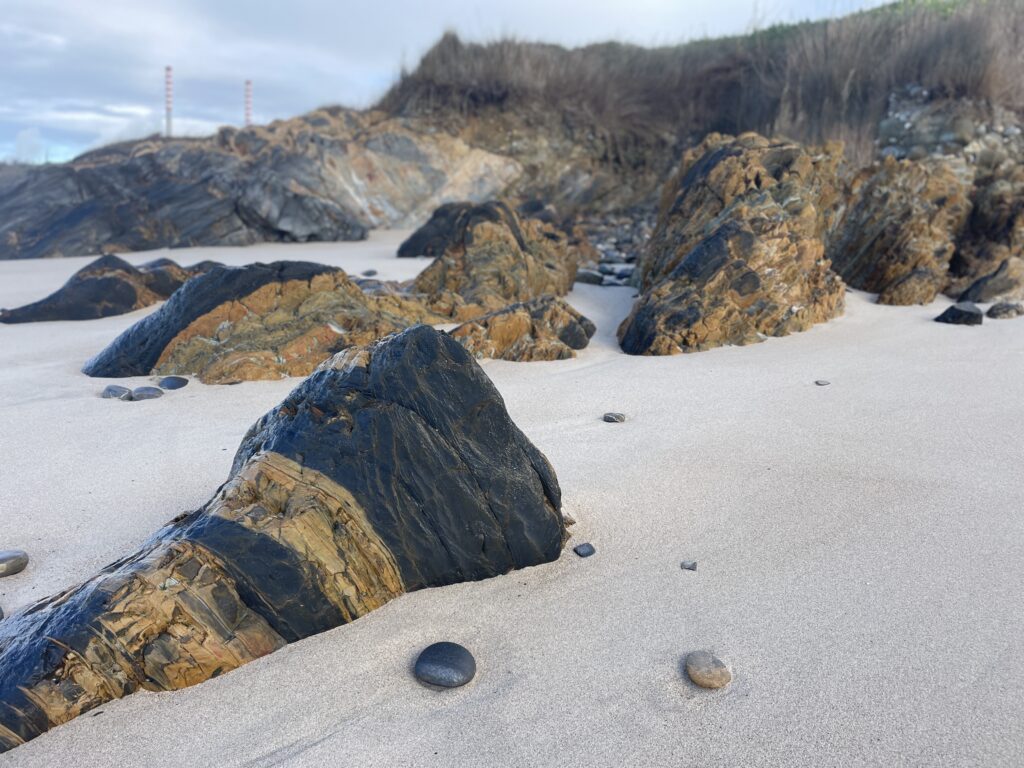
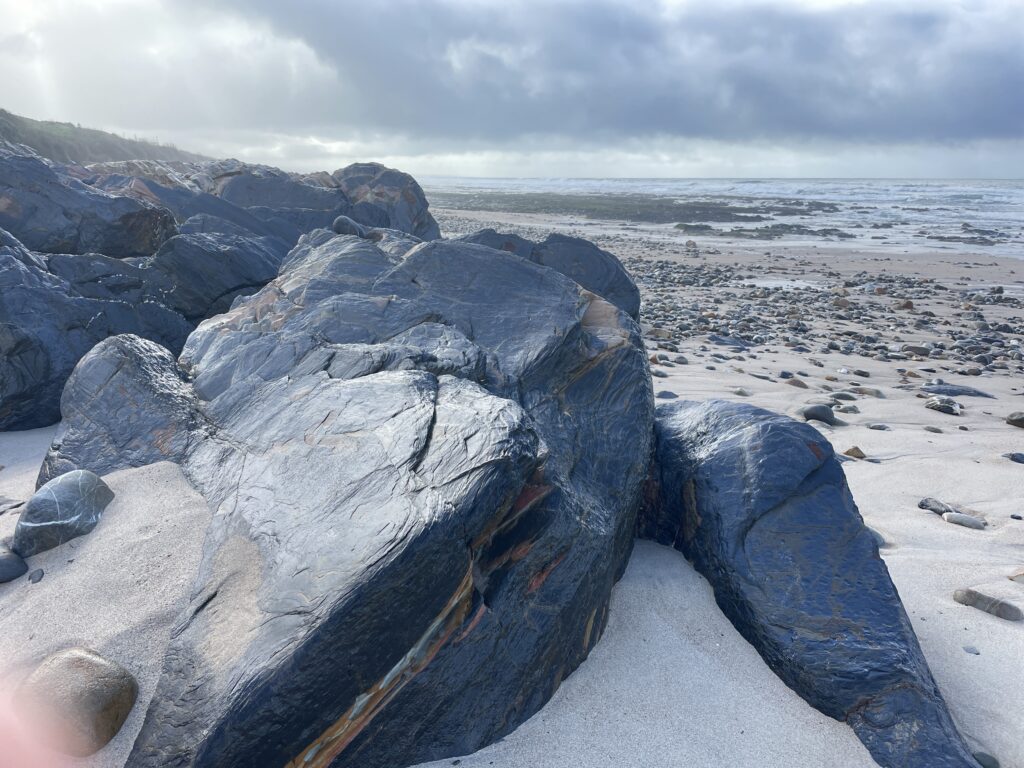
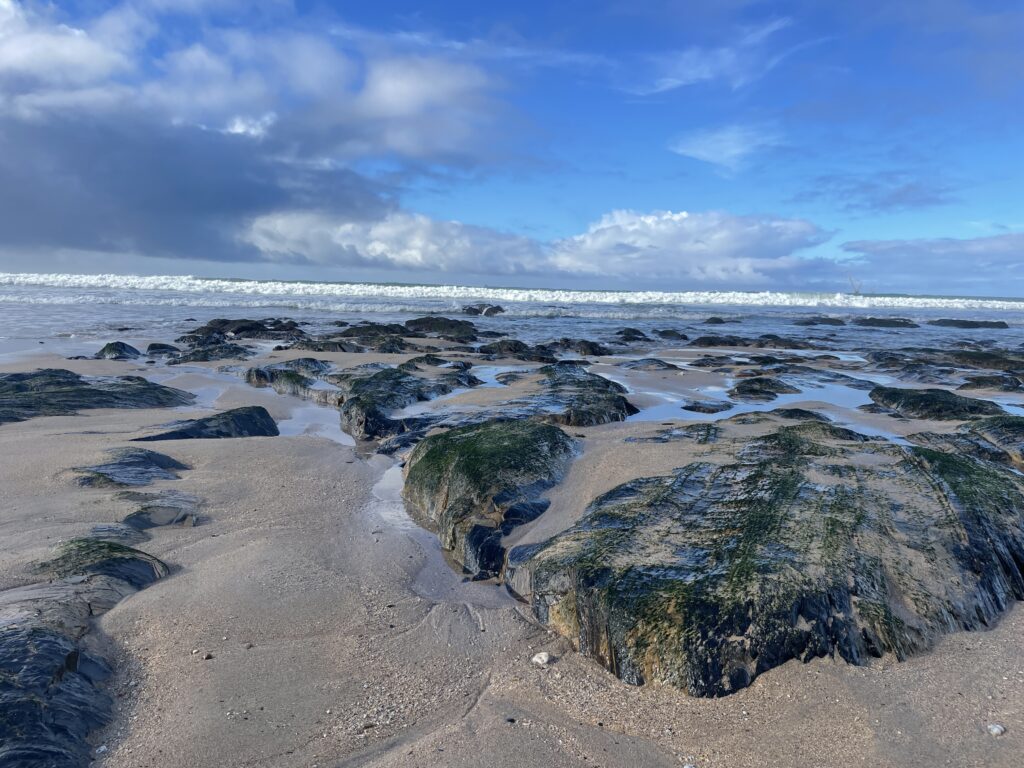
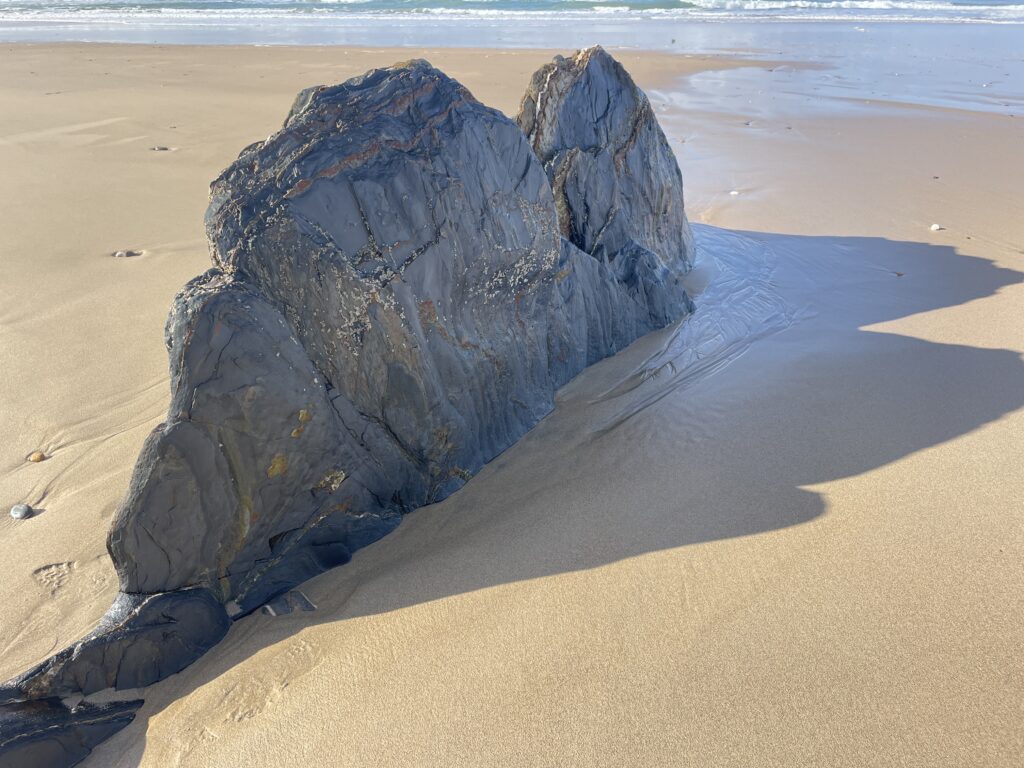
I always thought surfers had respect for nature but whilst on my walk along the roadside where they parked I came across a few leftovers from campers with small VW or similar vans who very obviously didn’t have toilets onboard. This makes me very angry as it gives ‘motor-homers’ a bad name and a good case for not letting them park overnight in some car parks.
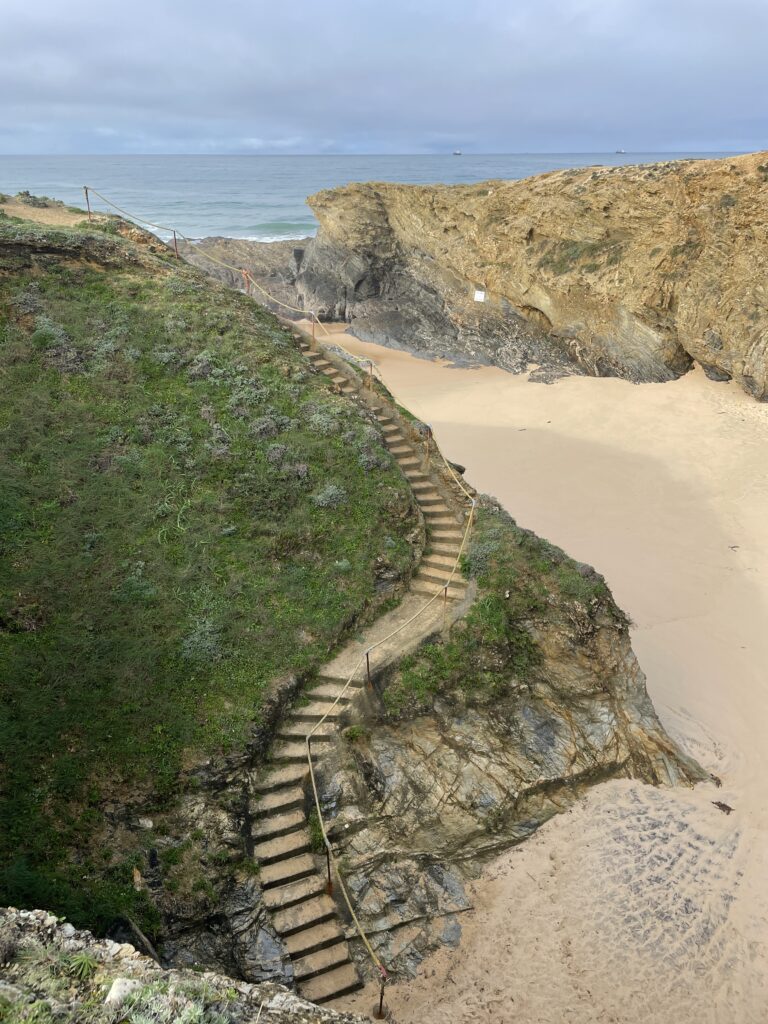
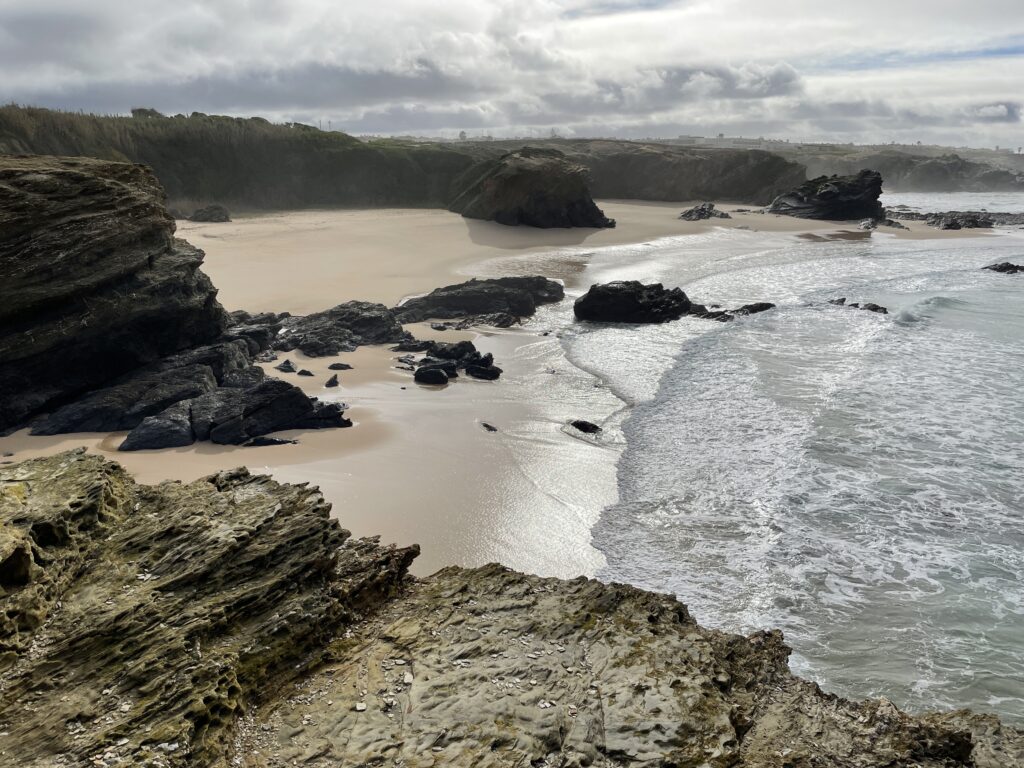
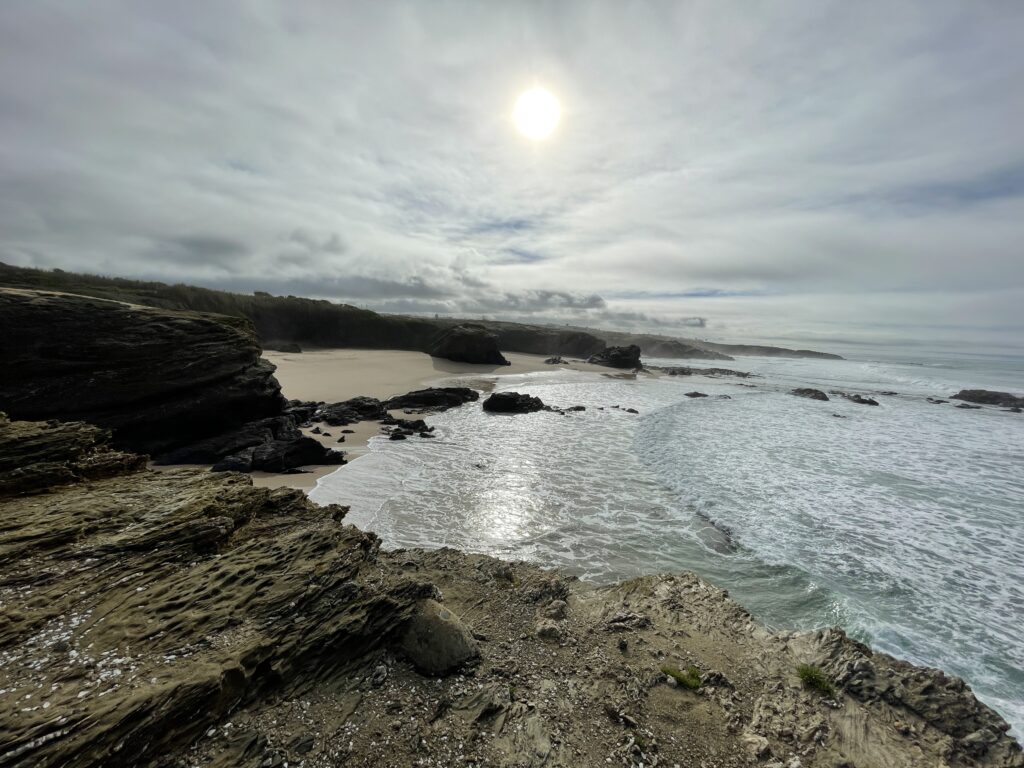
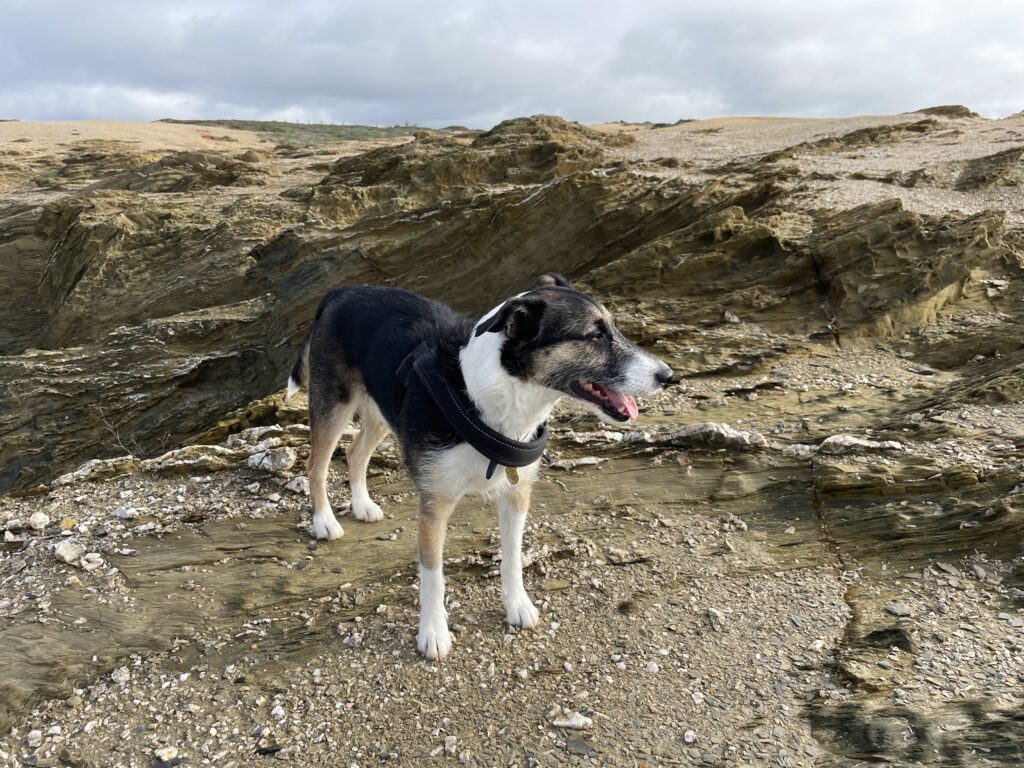
The following day we were passing Porto Covo again, so we couldn’t resist another stop. This time we walked for an hour along the coast. This area is part of the Rota Vincentina, a network of walks and events for visitors to the area that bring together local businesses and cultures of southwest Portugal. This coastal walk is stunning as you discover small beach coves below the cliff top that are accessible only when the tide is out by stairways built into the rocks and often contain small caves and rocky archways. The waters are crystal clear and I expect in the hotter months of the year would be great to swim, canoe and paddleboard around.

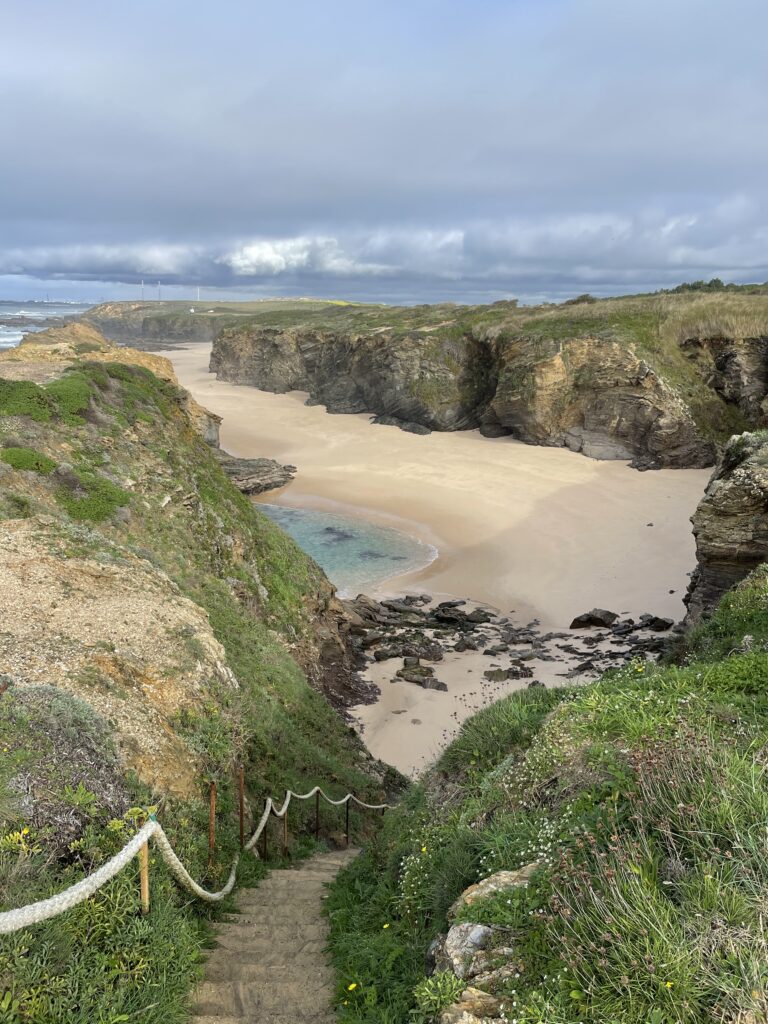
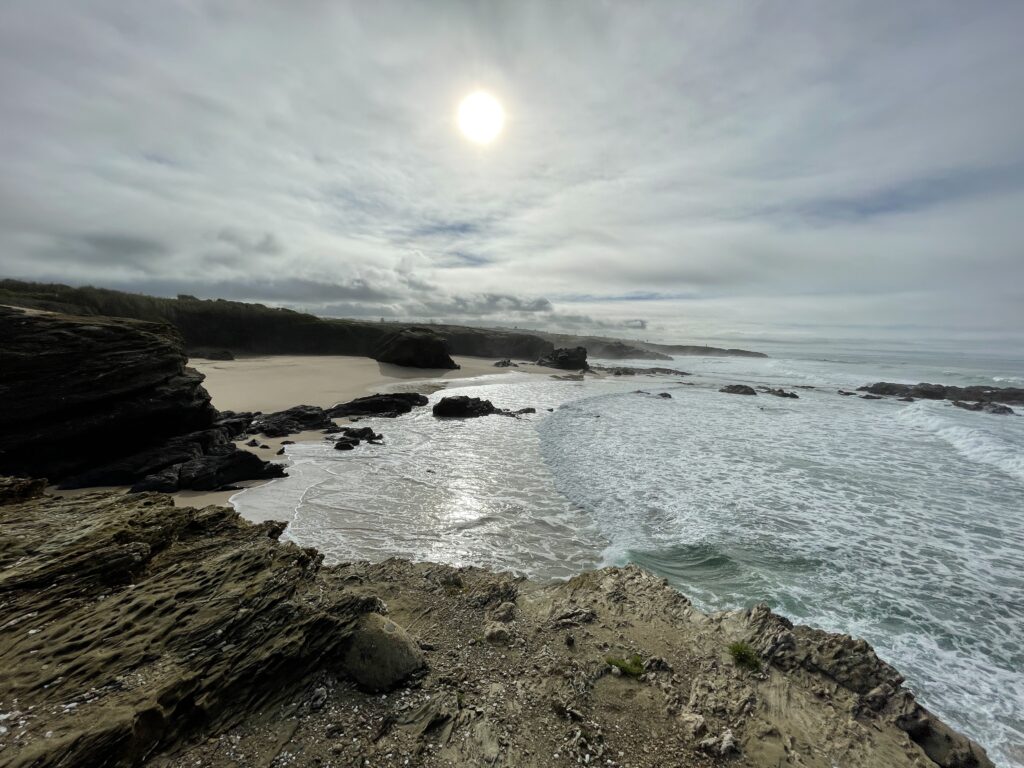
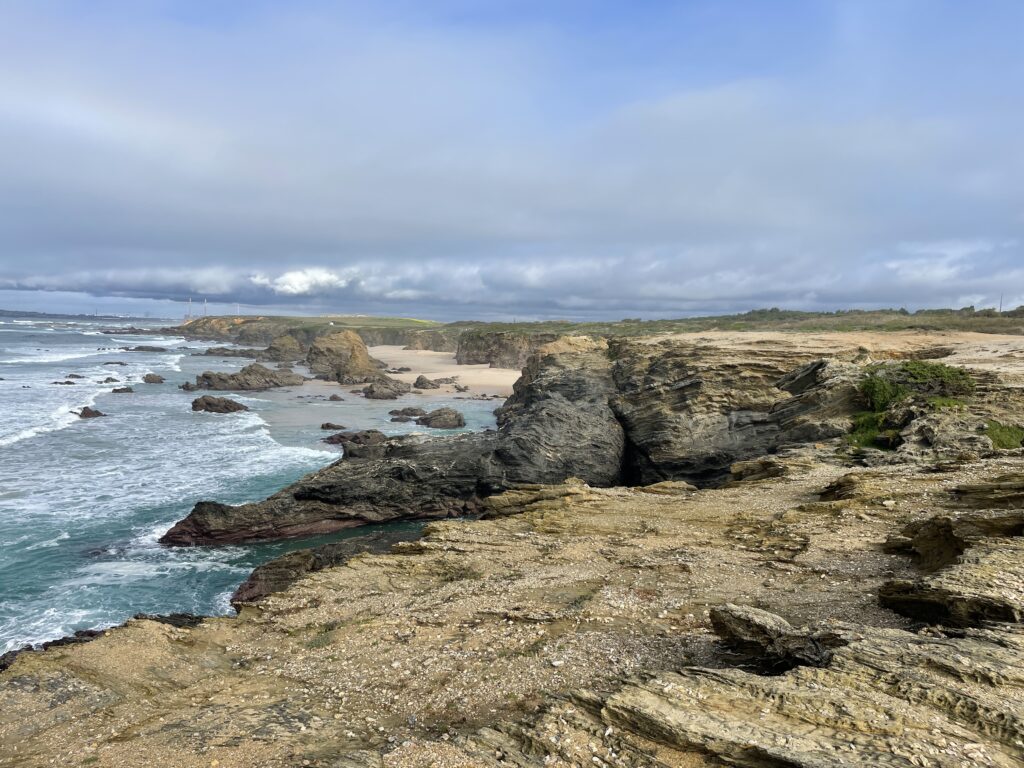
Porto Covo
I wound strongly recommend coming to this area – it’s not so touristy as the south but extremely beautiful. Porto Covo is a small fishing village which lots of little restaurants that sell sardines and other local fish dishes.
From here the road then took us inland and we started on a couple of days driving through some stunning scenery. We drove to a town called Odemira along a fairly windy road through some low level mountains and stopped there for lunch to explore.

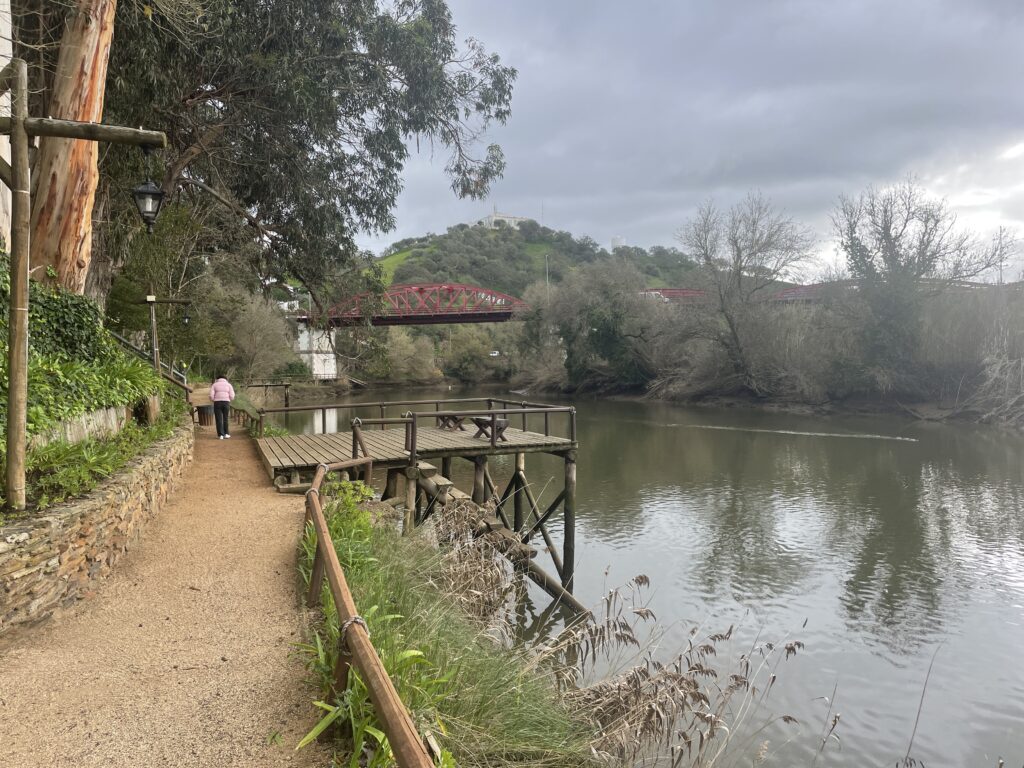
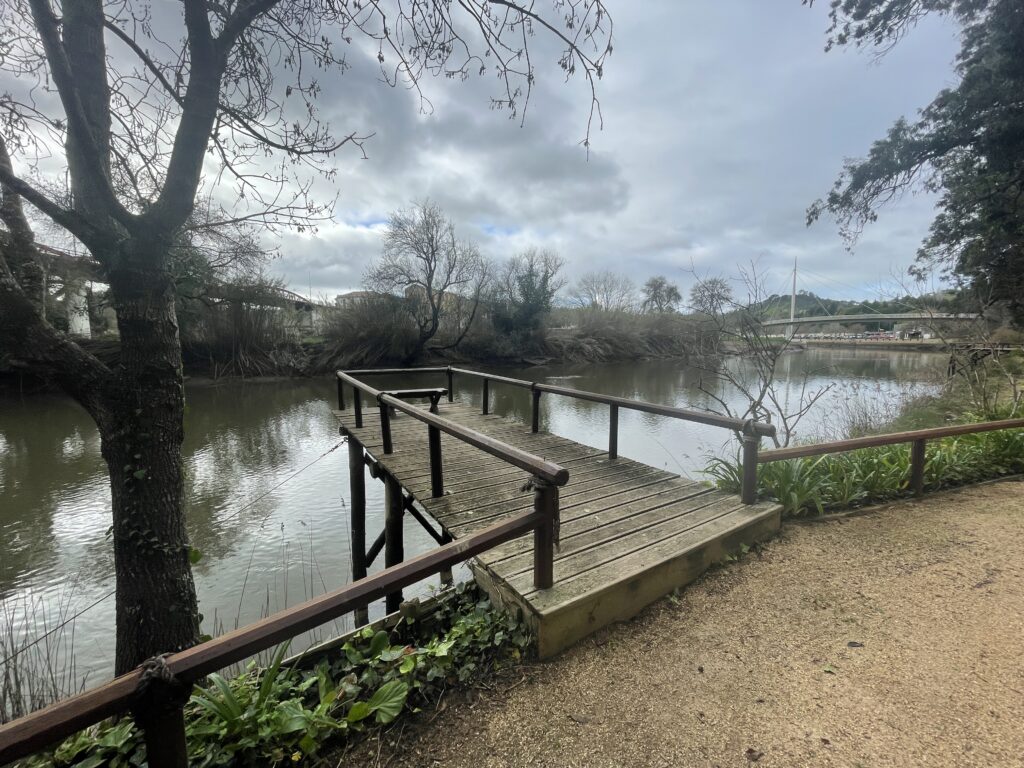
Finding a parking spot in Odemira proved stressful as the suggested spot on my app was inaccurate and the streets were busy and narrow for a 2.3m wide motorhome with some sharp bends.
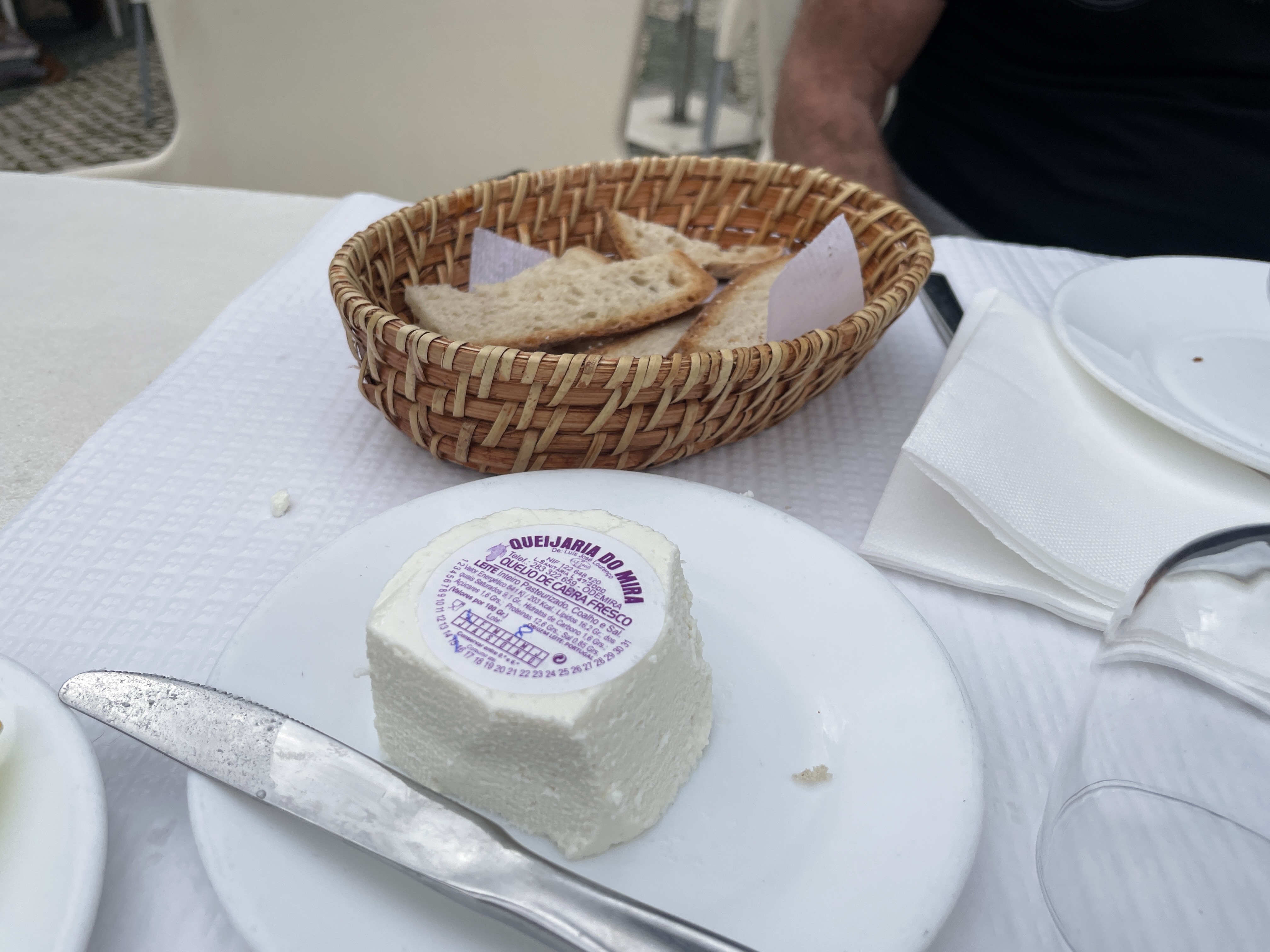
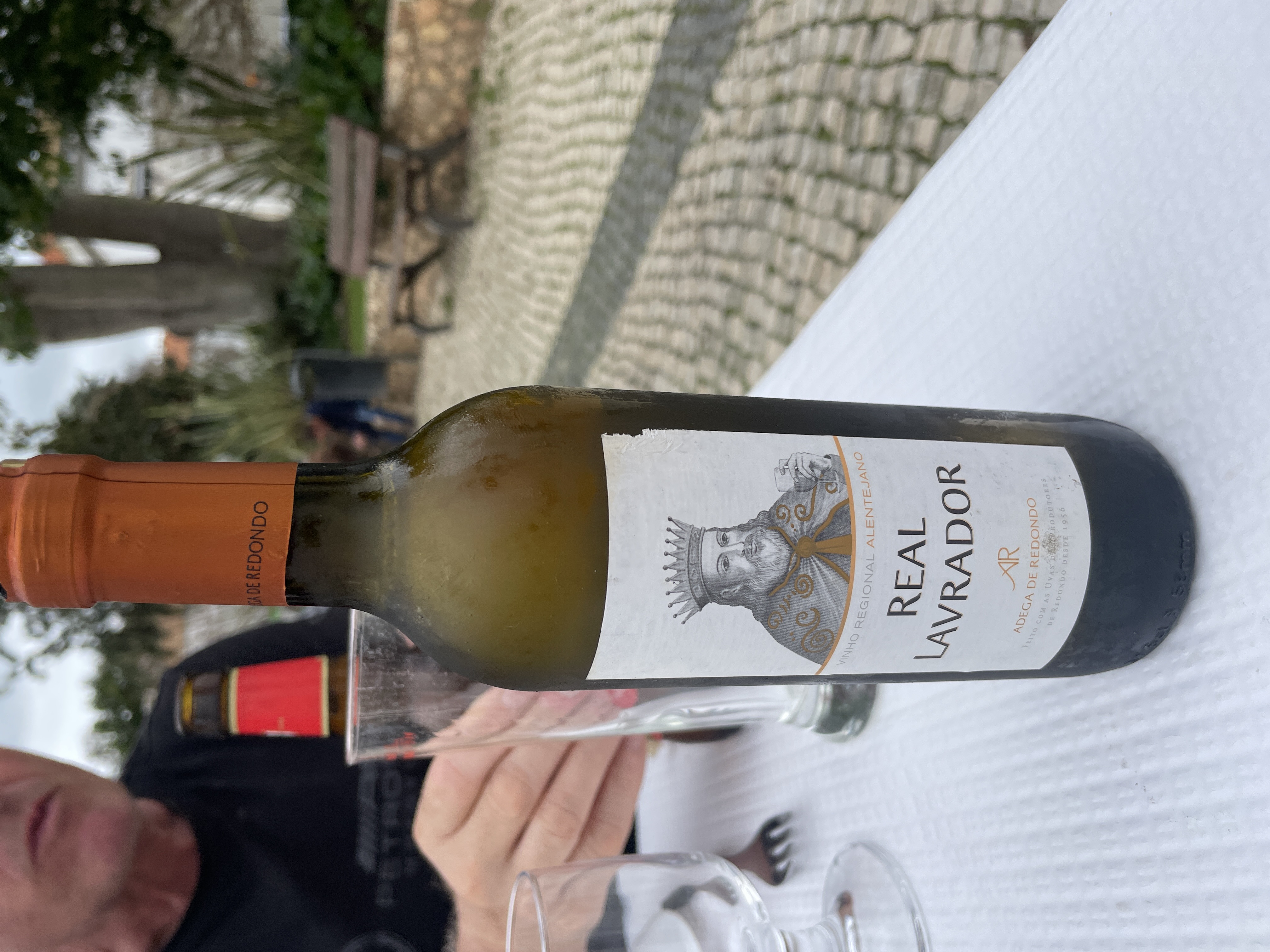
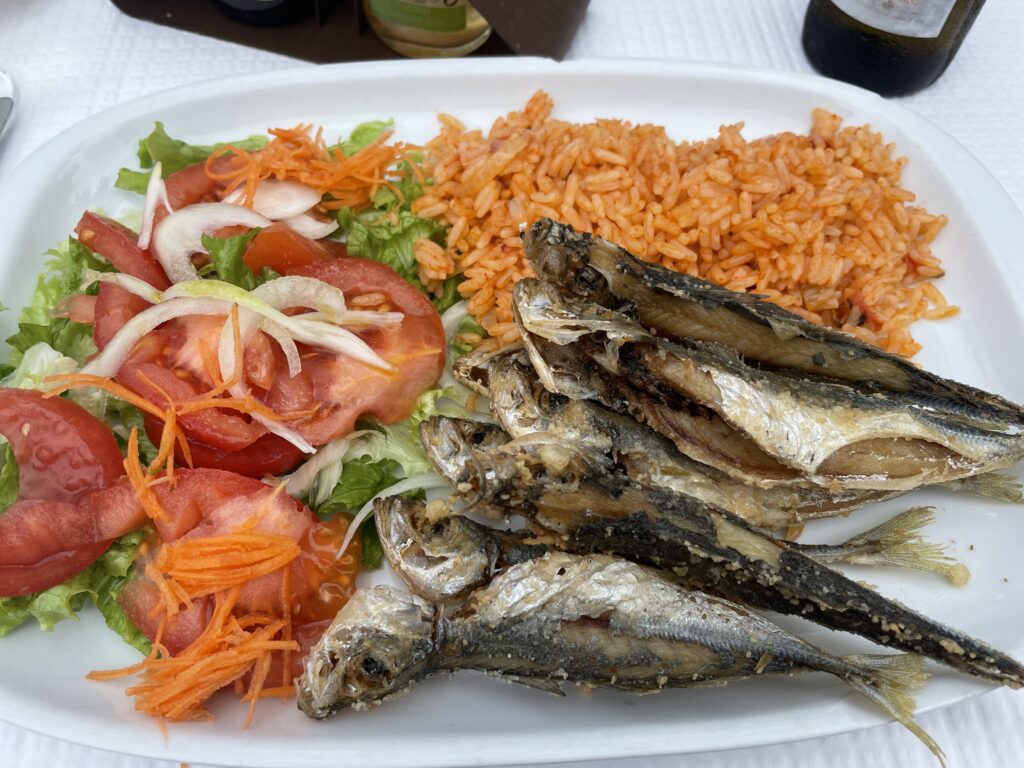
Here I got my first taste of grilled sardines, very delicious but extremely bony – my dilemma was do you eat the whole fish??
It was a typical Portuguese lunch served with yummy local goats cheese, olives and bread as appetisers by ladies who could pass as your aunties!
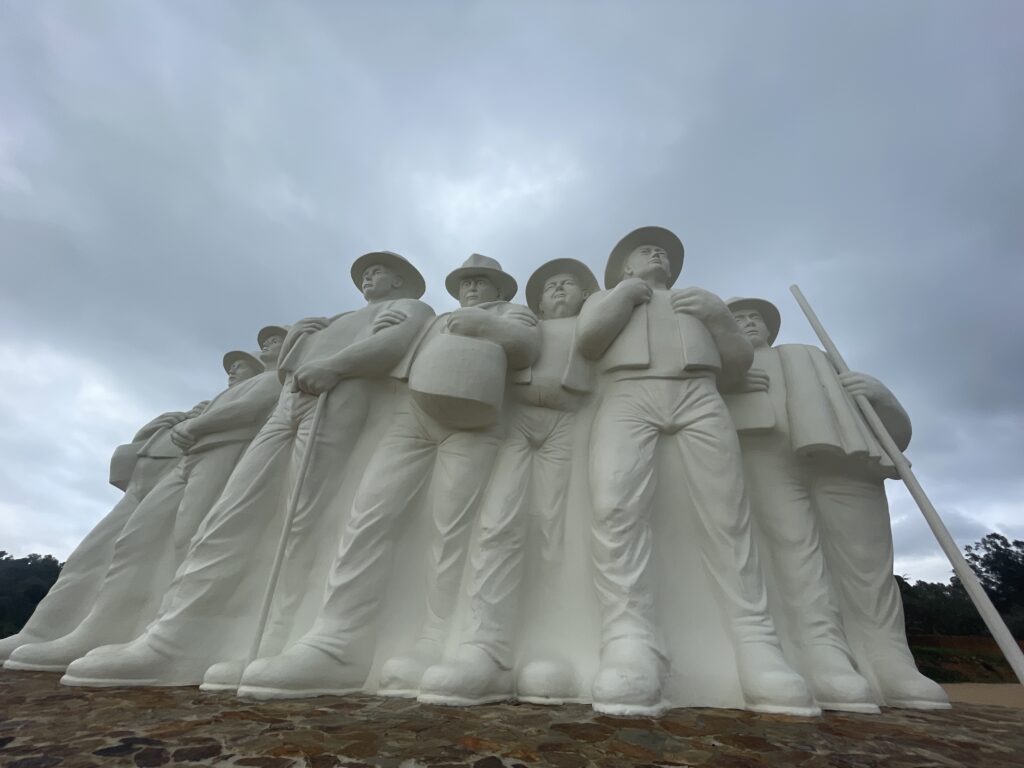
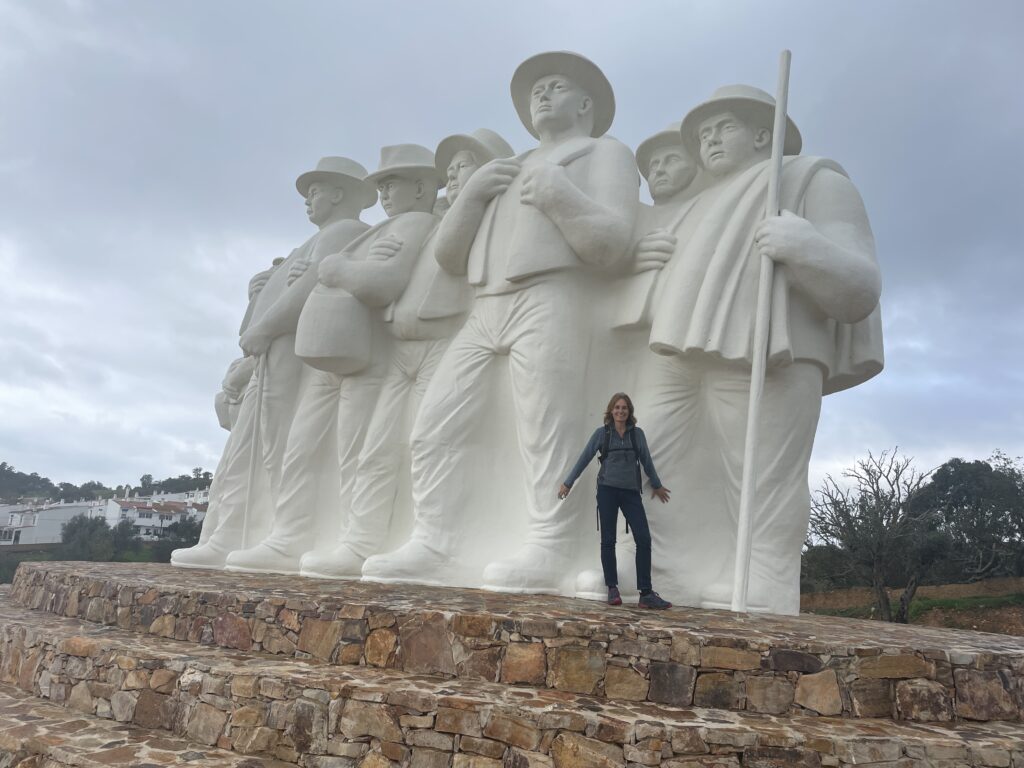
Whilst eating our lunch I noticed a huge white statue in the distance that I had to investigate. We discovered that the giant sized white statue of men dressed in shirts and hats was commissioned to celebrate Alentejo Chantes – traditional folk songs sung by bull workers of this region. They had erected this giant size monument high up on a hill overlooking the whole region. It was quite remarkable.
Our stop that night was a German run Aire about 15 mins from Odemira tucked away in the hills. We arrived and were greeted by a young woman who invited us to park up anywhere amongst the other Dutch or German motor homers. She advised us that they were having major issues with the drainage and the owners were doing their best to sort out today.


We weren’t too worried as we had everything onboard but the site was quite busy that night with guys all crowding around the septic tank discussing the right way to sort the blockage. Bob got involved as he’s got experience of building drains but unfortunately it wasn’t solved that night as it got dark.
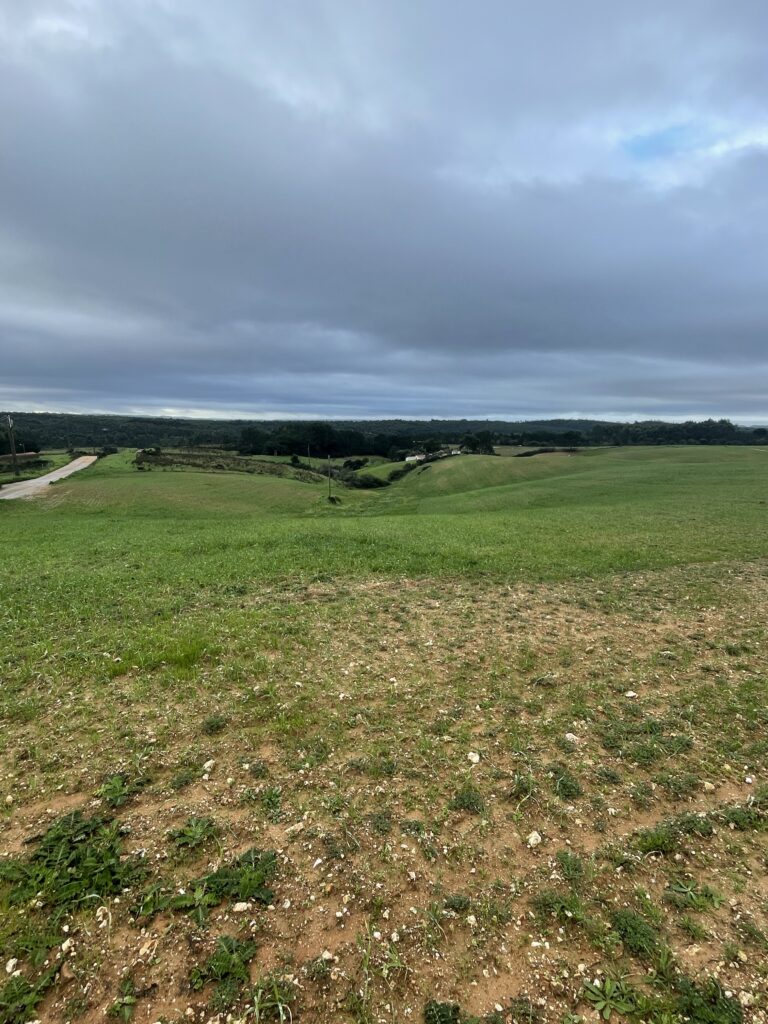
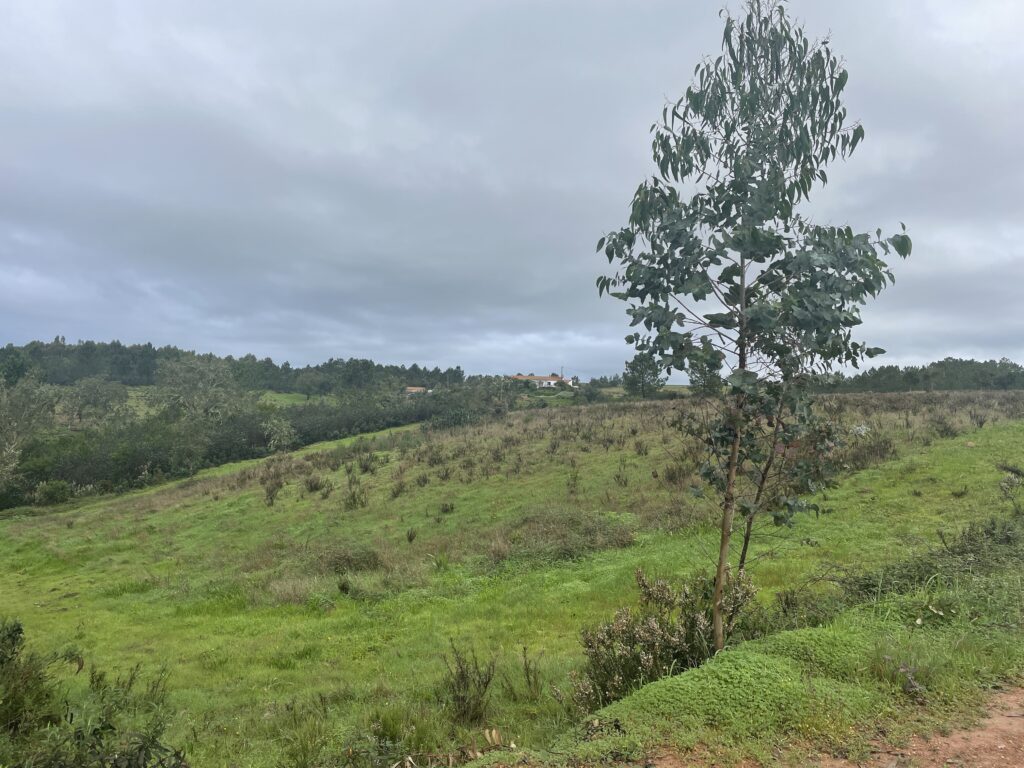
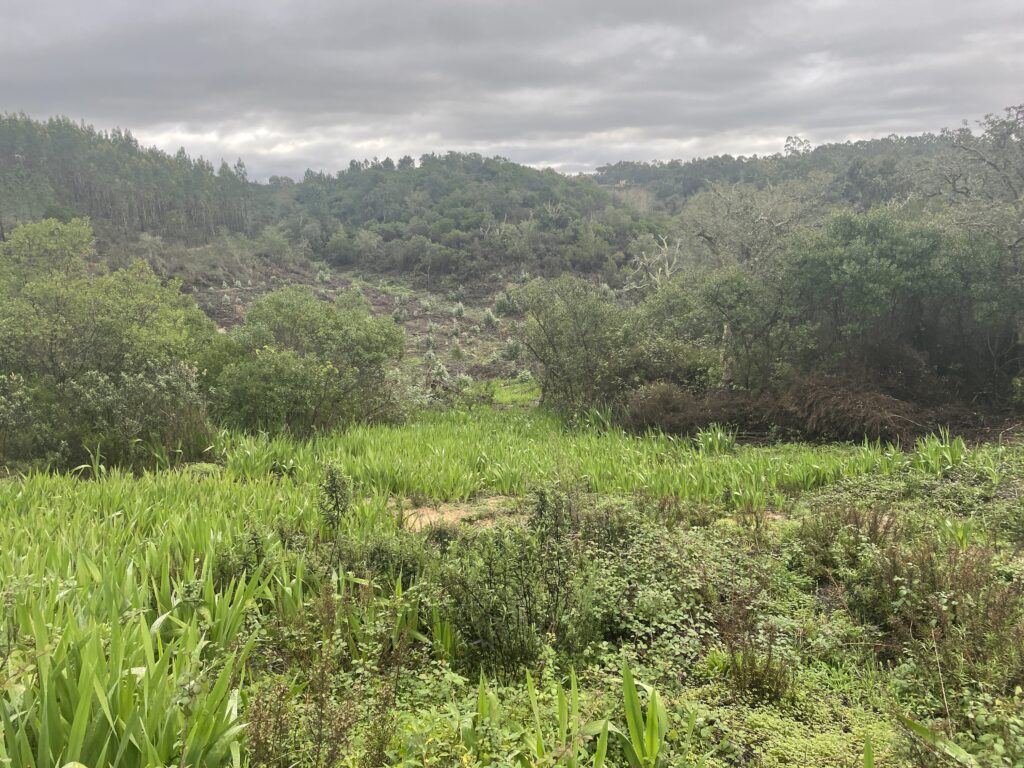
George and I had a lovely walk in the morning along dirt tracks in very green and beautiful country side – the inland terrain is changing – gone are the olive groves, more Cork Oaks, lots of eucalyptus and pine forests and red rock.
It was raining as we headed south and approached the Algarve. The south west of the Algarve coastline is home to a protected Nature park. This meant that it isn’t overdeveloped and there are few tarmac roads that take you to the coast with places to park up. It remains pretty untouched and the coast road down to the south winds through small towns and villages dotted with white houses in the lush green pastures. We have noticed that there is little livestock in Portugal that we have come across and most of the land is for agricultural purposes or quarries for manufacturing building plaster and cement.
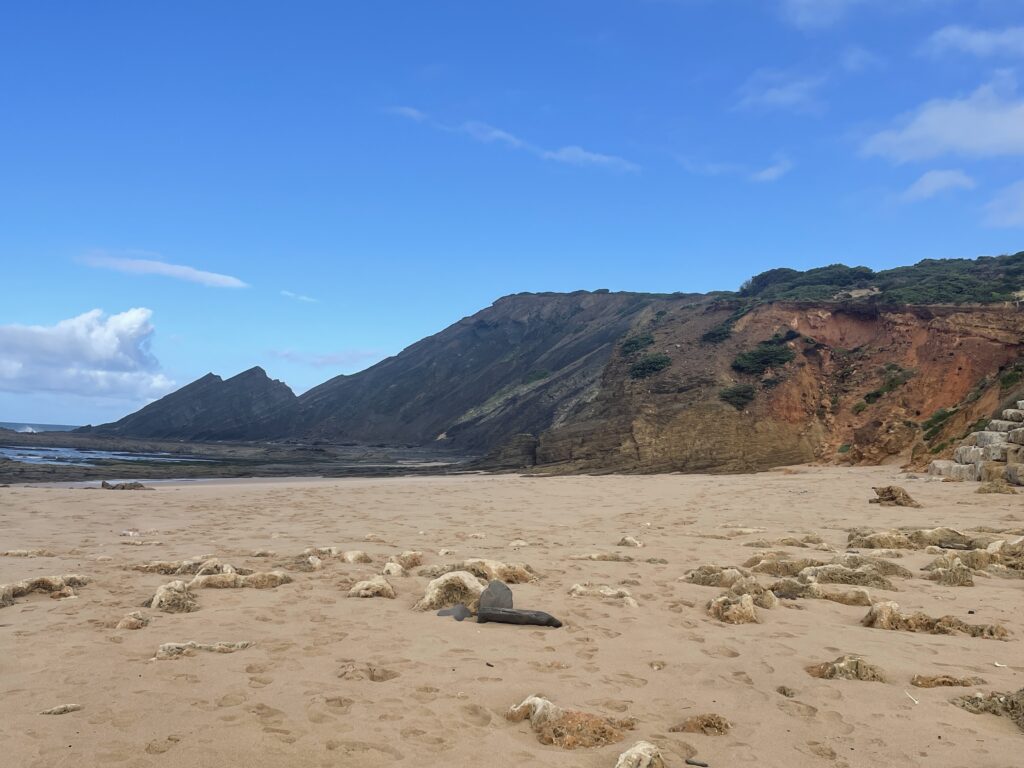
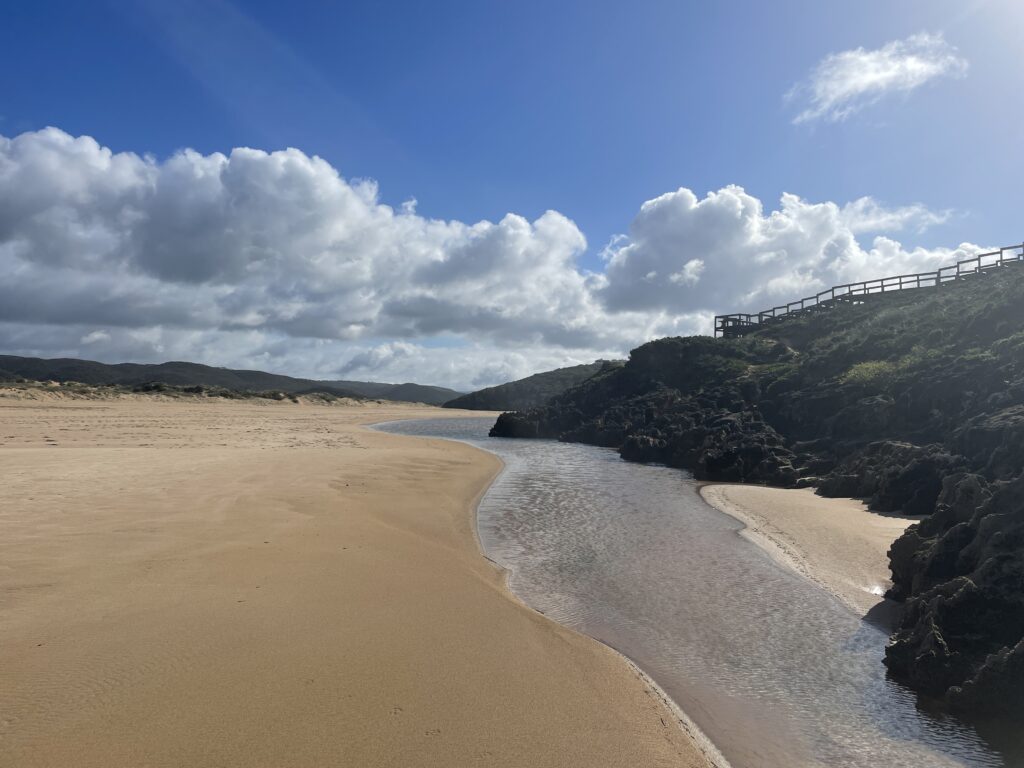
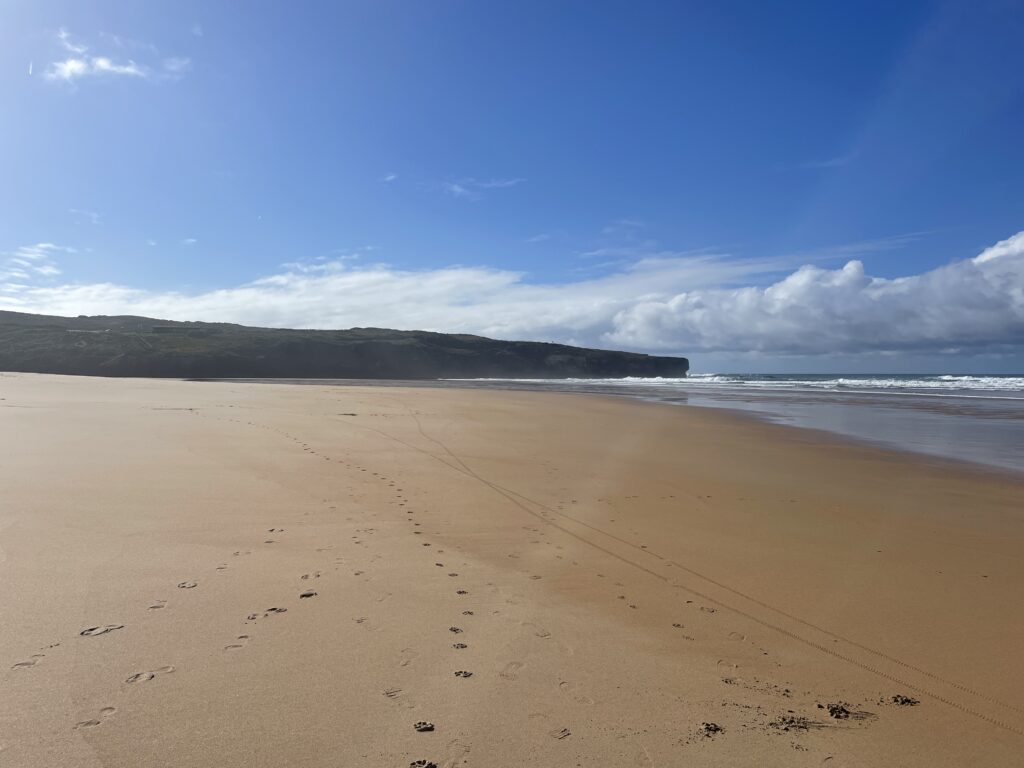
At Aljezur We took one of the roads off towards the sea that turned out to be 7km of patchy bumpy tarmac (at least there were no potholes). We had no idea what was at the end as we drove round bends and through interlocking lush green hills full of pine and eucalyptus trees to end up opening out to an expansive beach that was almost deserted. In front of the huge white sandy beach was an area of sand dunes and down one side was a lagoon river and a huge rock formation and slate cliff at the other. Whilst Bob got out his metal detector George and I went to explore.
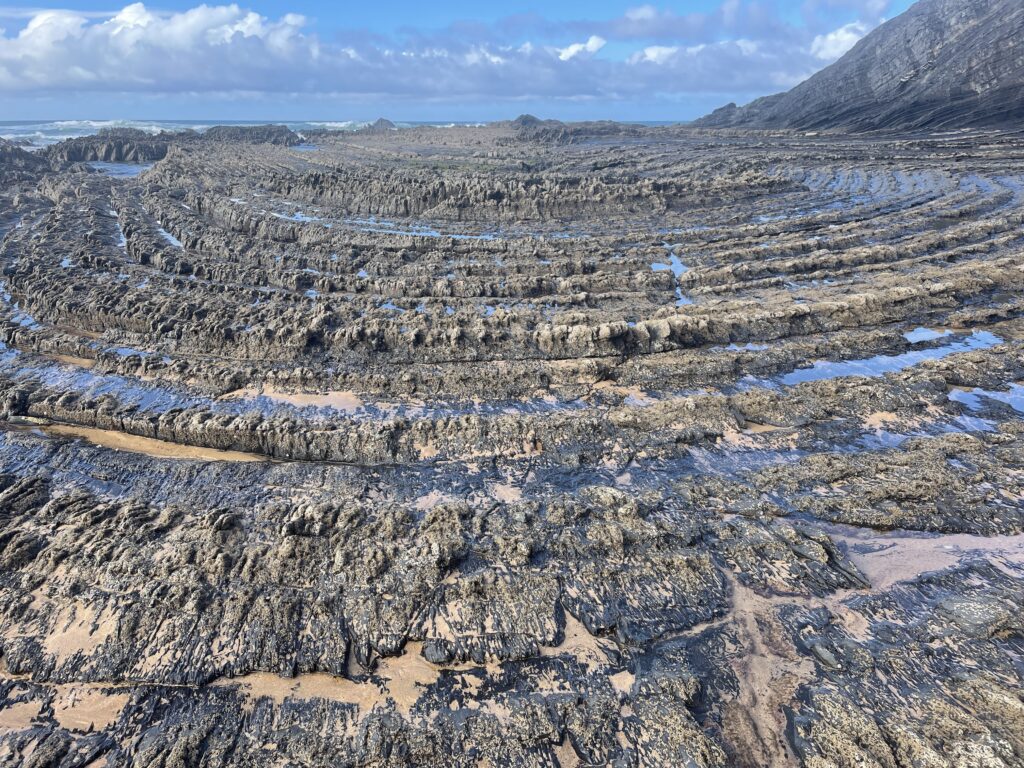
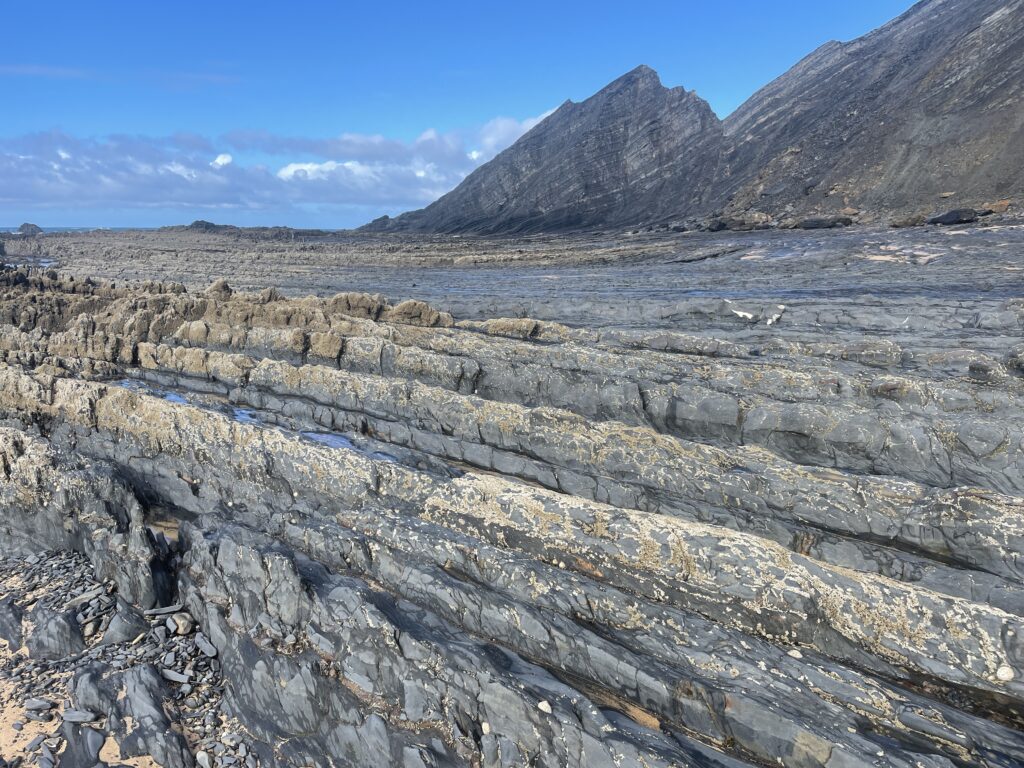
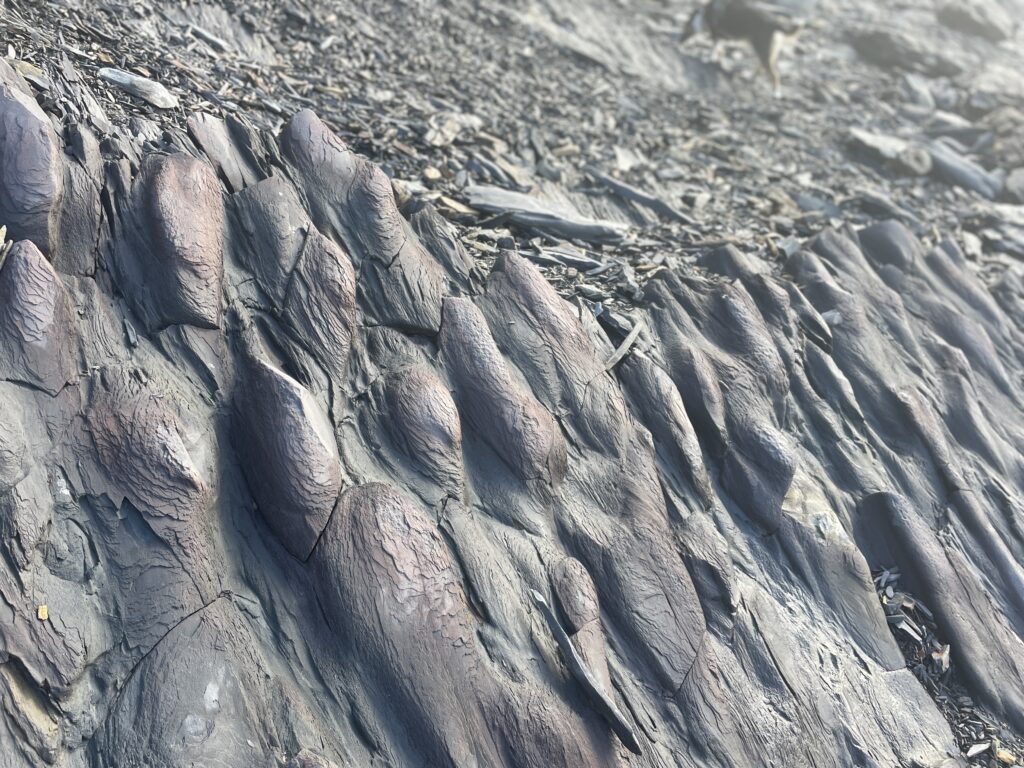
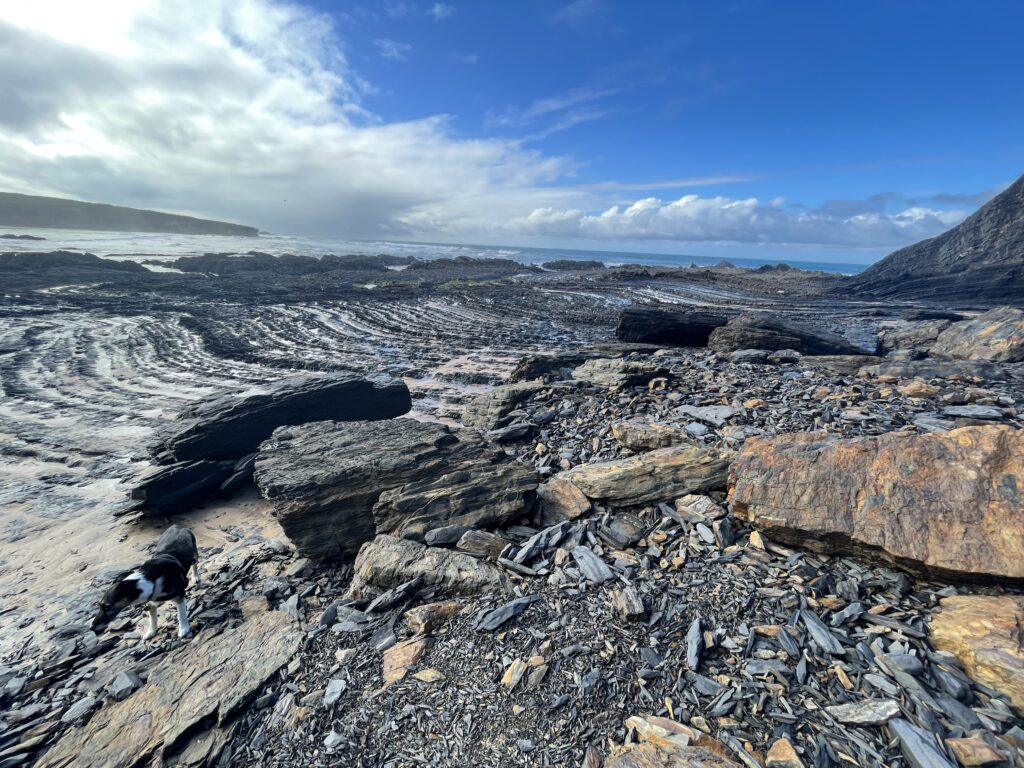
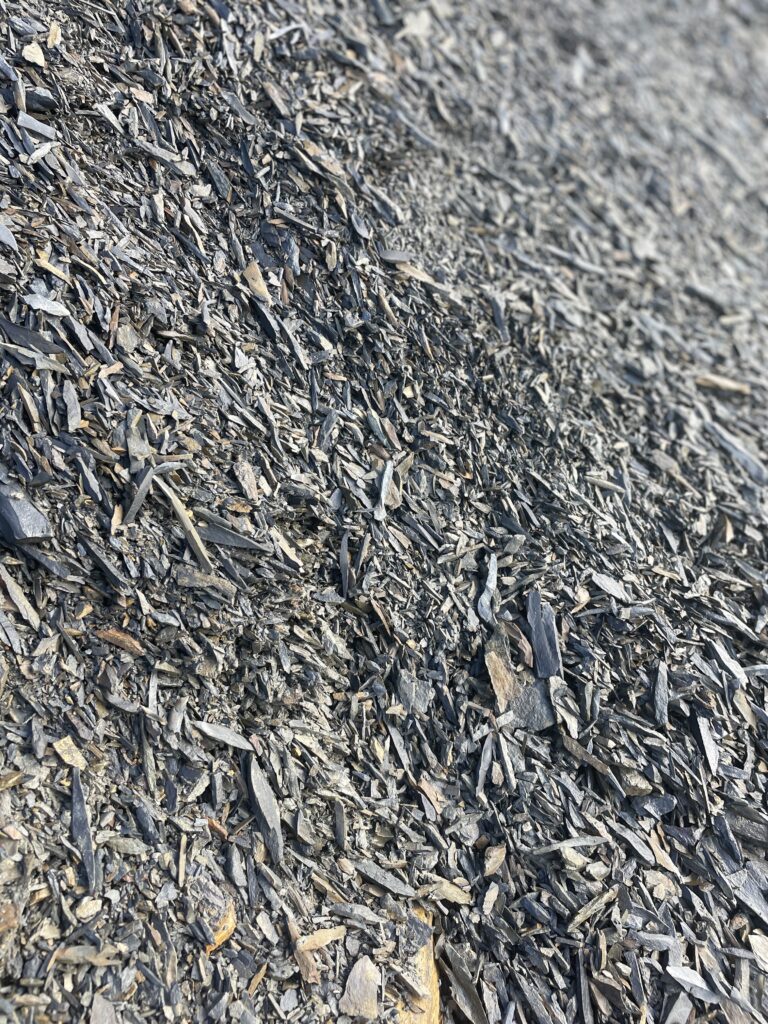
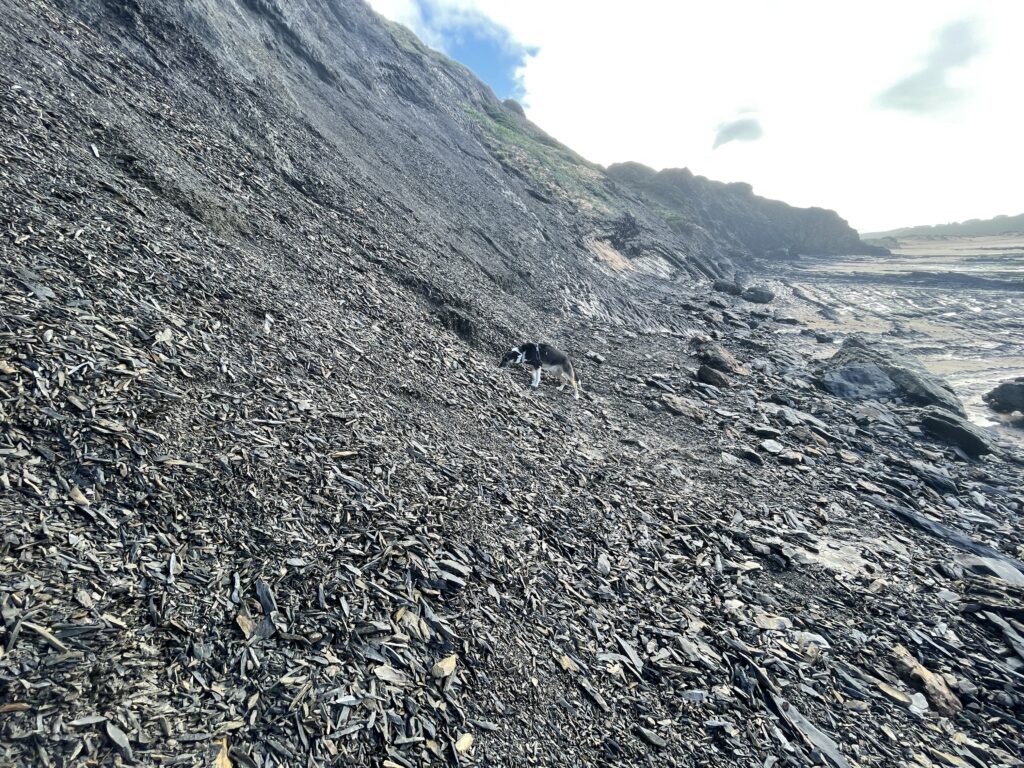
The beach is called Praia da Amoreira and it is jaw dropping gorgeous, I couldn’t believe our luck, the rain from the morning had disappeared to leave a blue sky and warm sunny day. When I ventured around the to the cliff side I discovered the most unusual rock formation that is the result of volcanic lava as there is a major tectonic fault line running through Aljezur. The shapes of the rocks in this small basin were a mixture of a flat expanse of rocks circular shaped, jagged rocks full of barnacles and rock pools and then lines of smooth bubble shaped rocks against a back drop of lose slate that must have fallen from the cliff side in landsides.
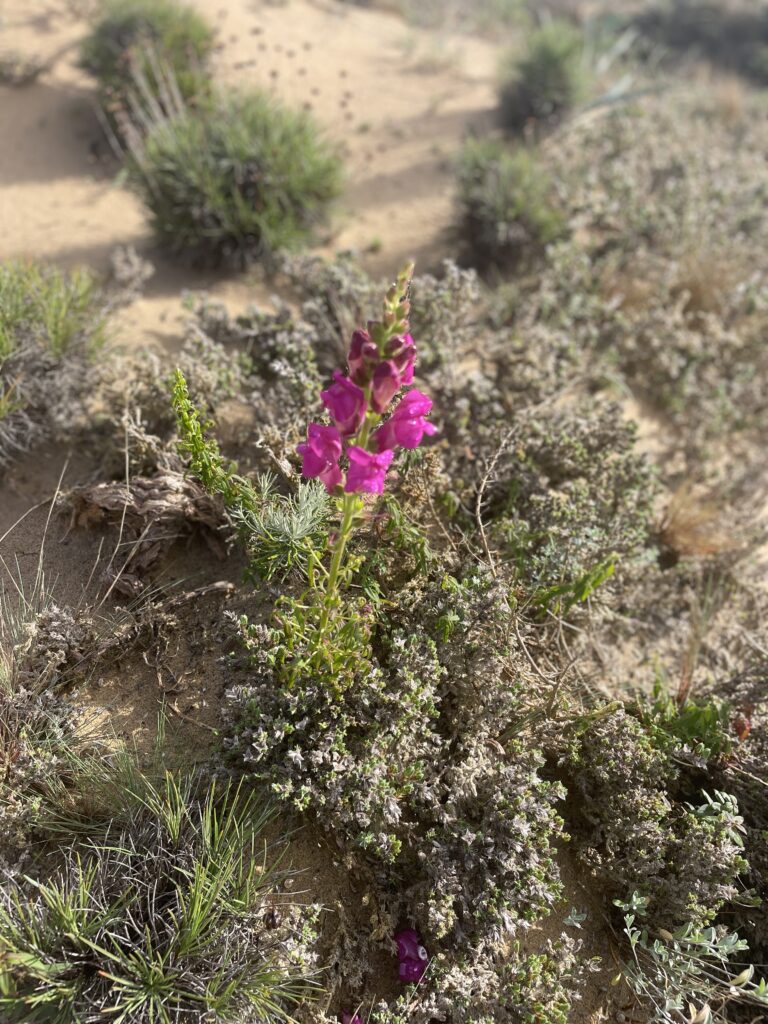
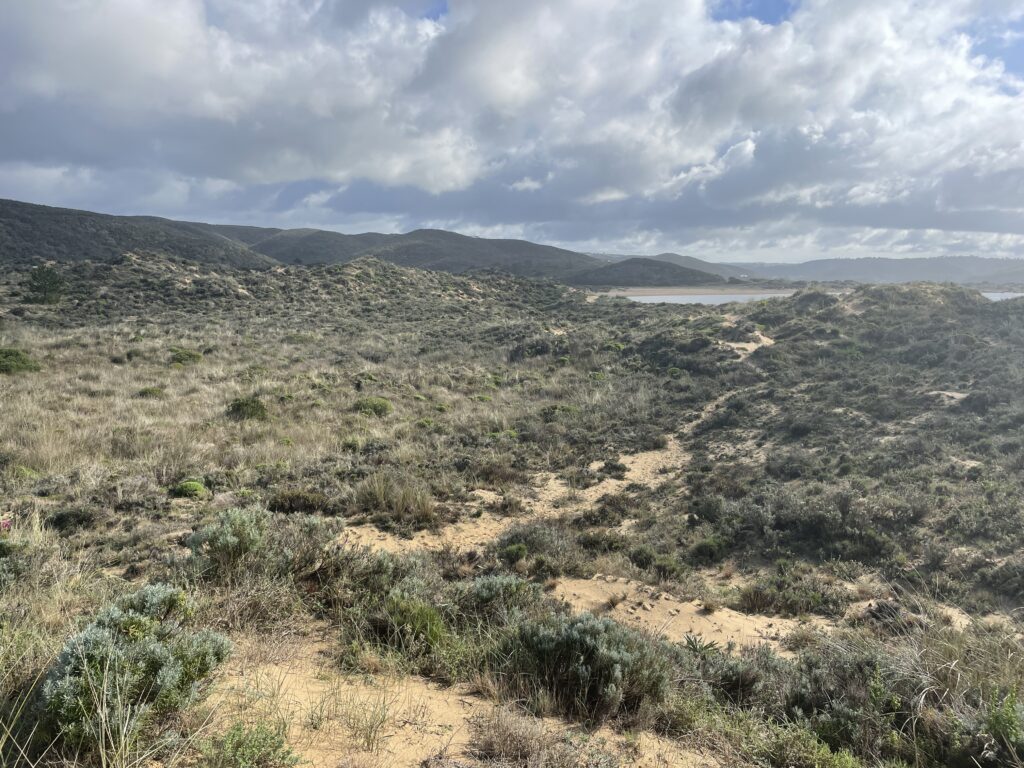
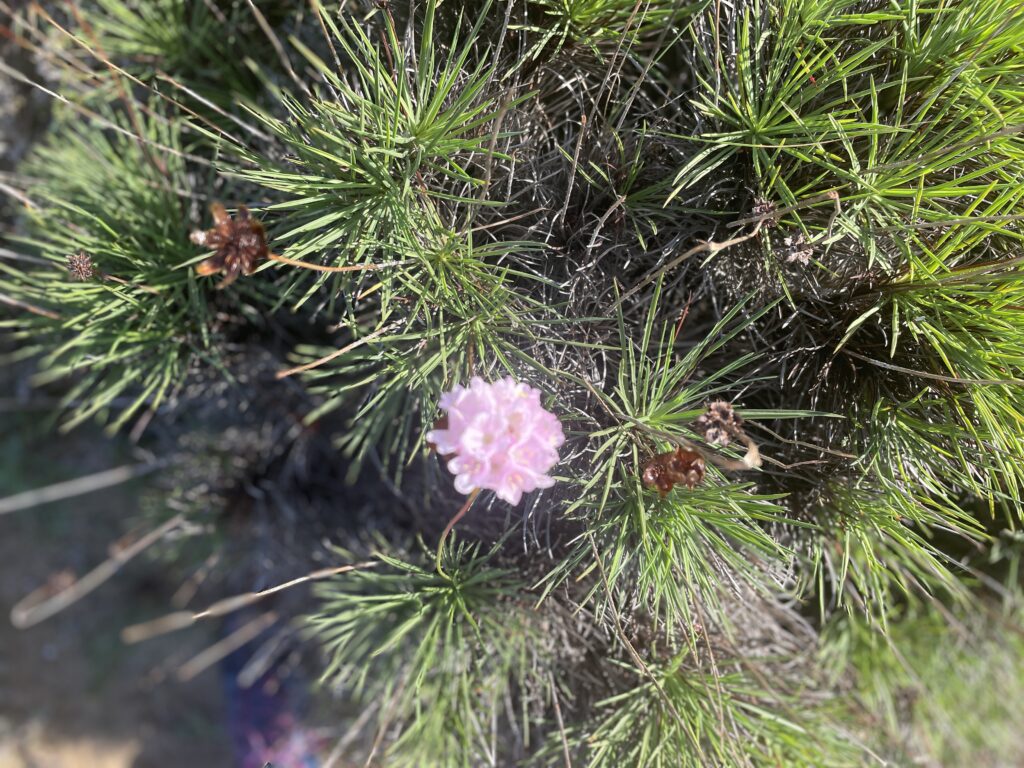
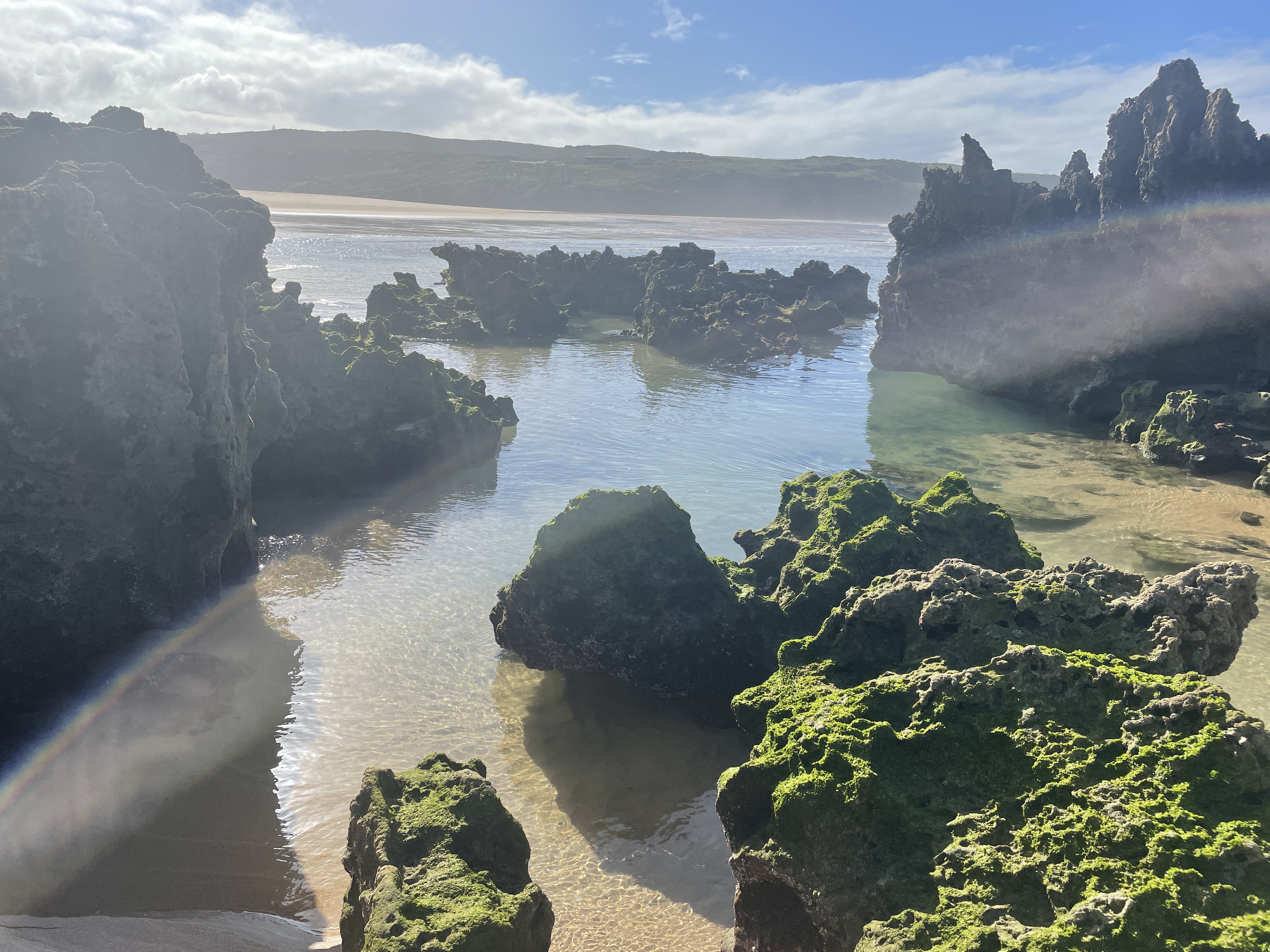
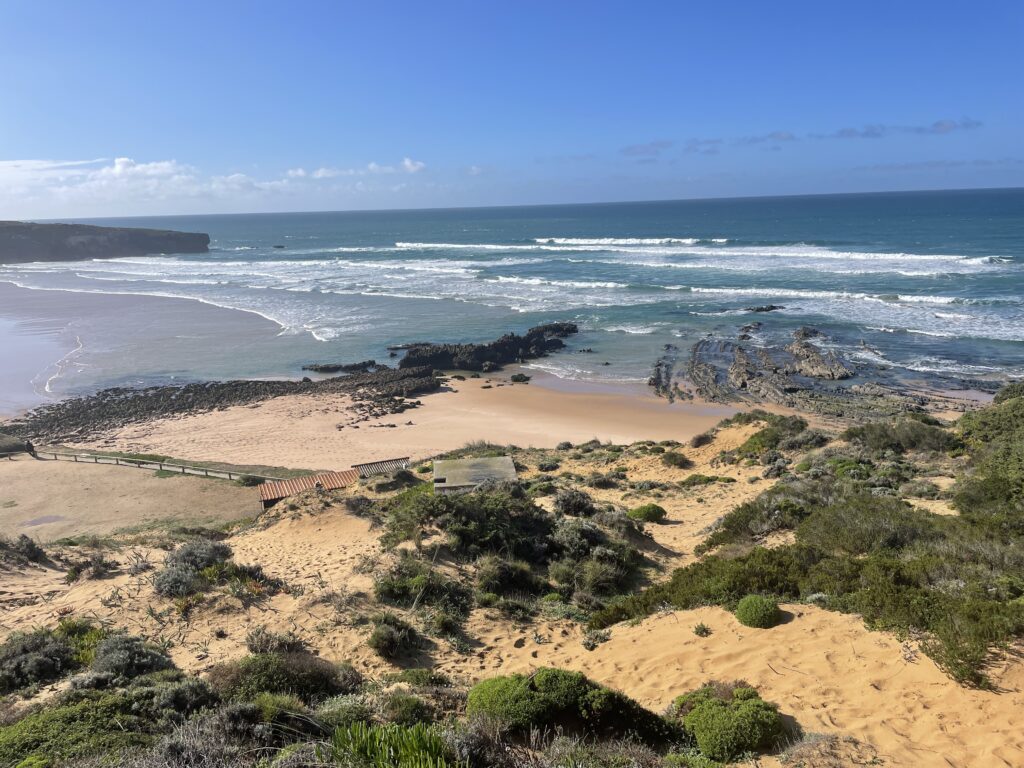
I then walked the length of the 550m beach to the other end to explore the lagoon, river and sand dunes and then up to the top of the cliffs to look down at the beach.
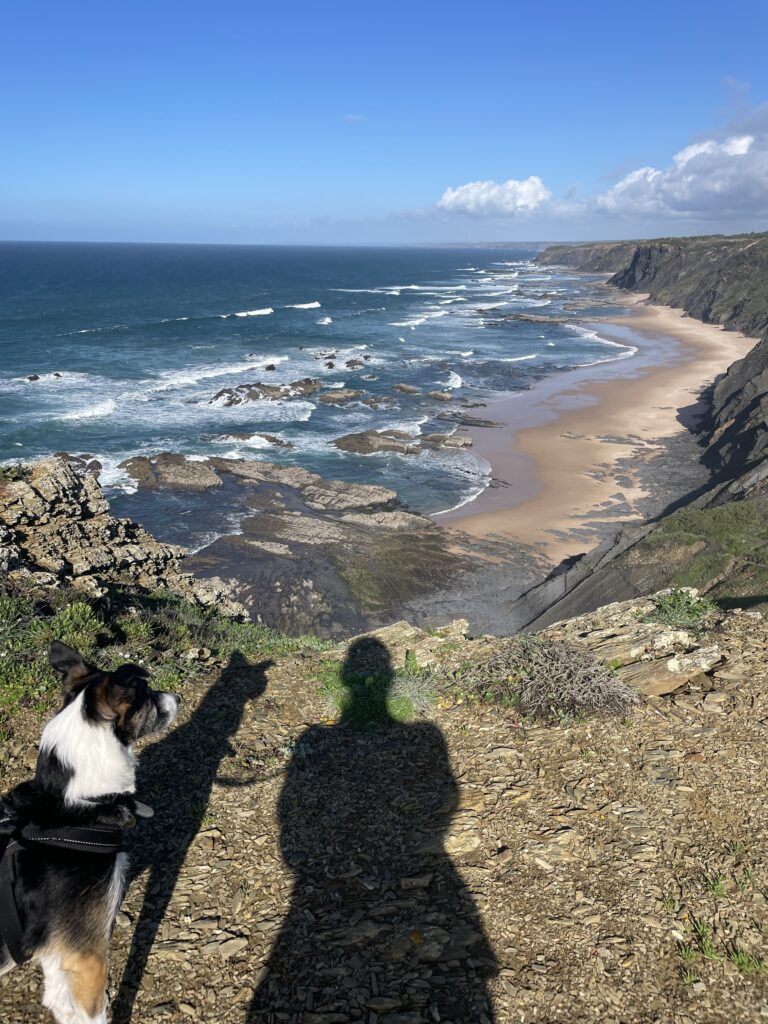
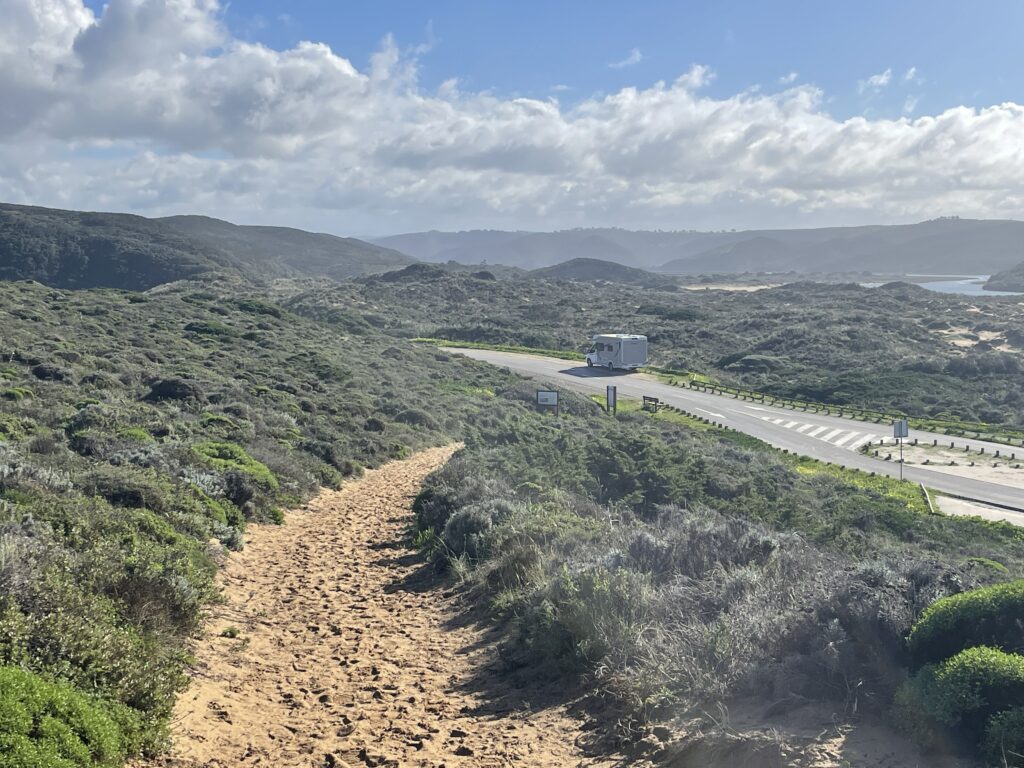
This area was outstanding and I was so glad that we took that bumpy road. Of course we had to go back too but this time we knew what to expect and took it nice and slow. We parked up at a campsite at Aljezur which was a few km out of the town so fortunately we were able to walk to a very popular restaurant close to the site who let us sit inside with George for one of the best meals we have had.
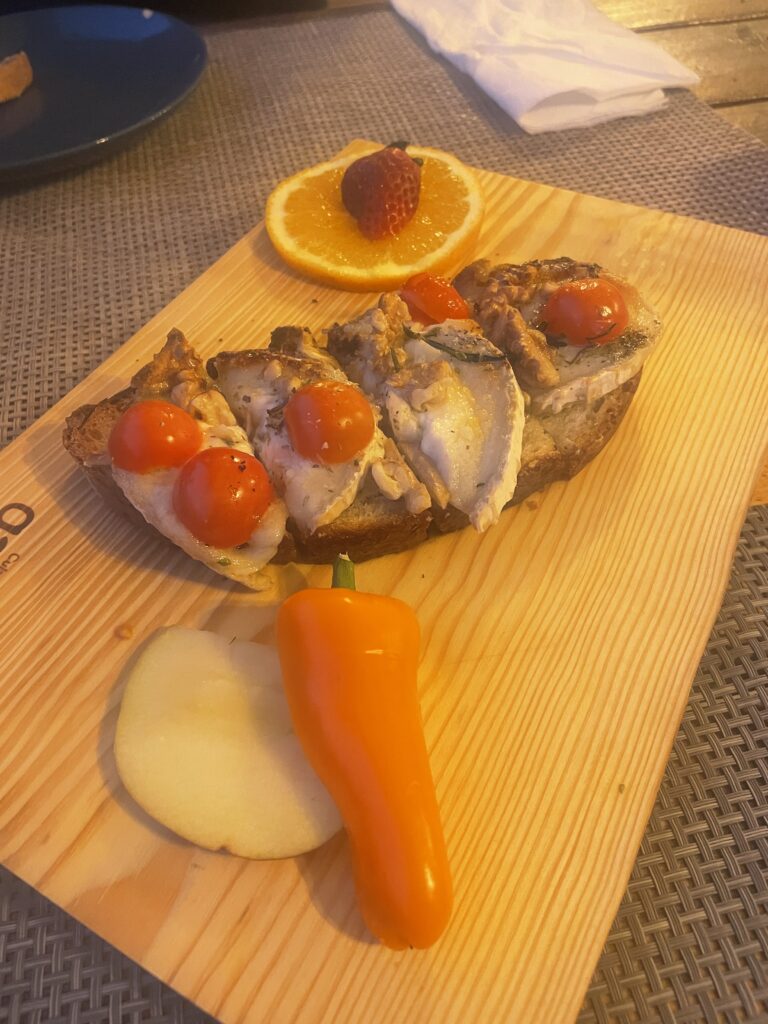
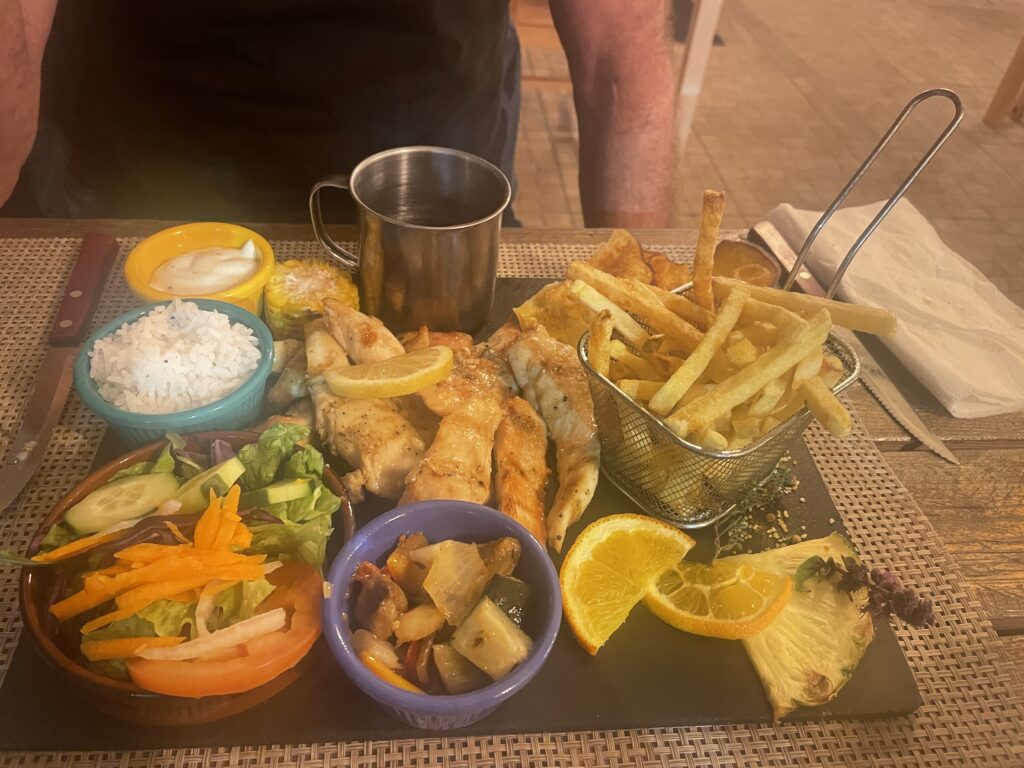
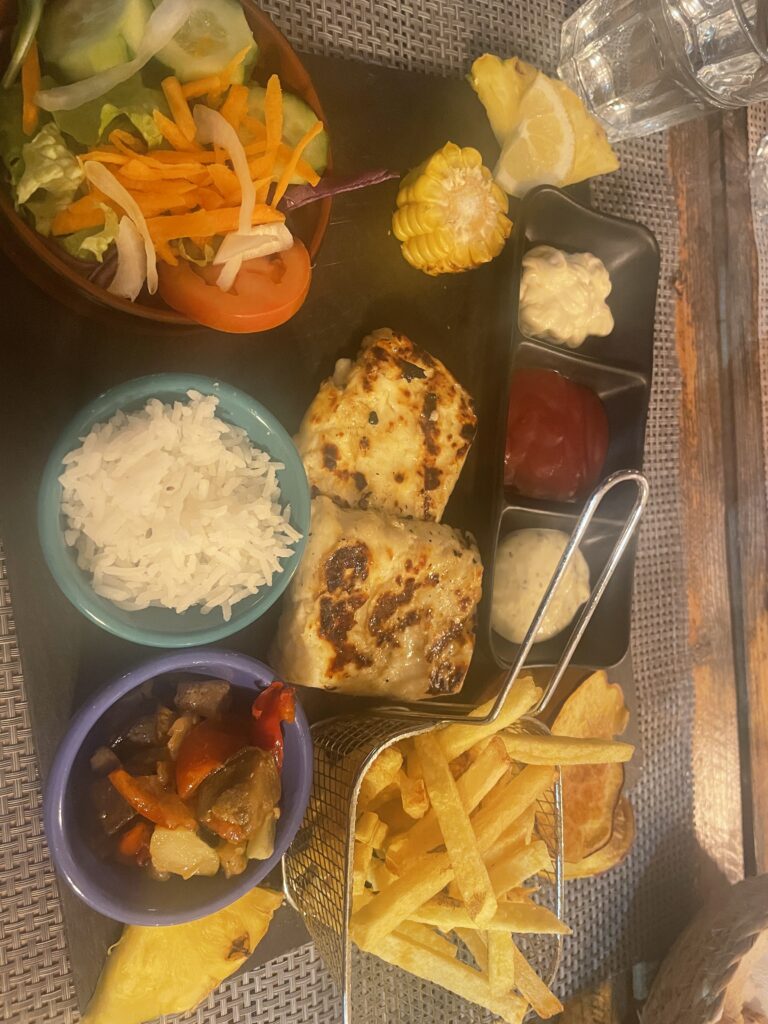
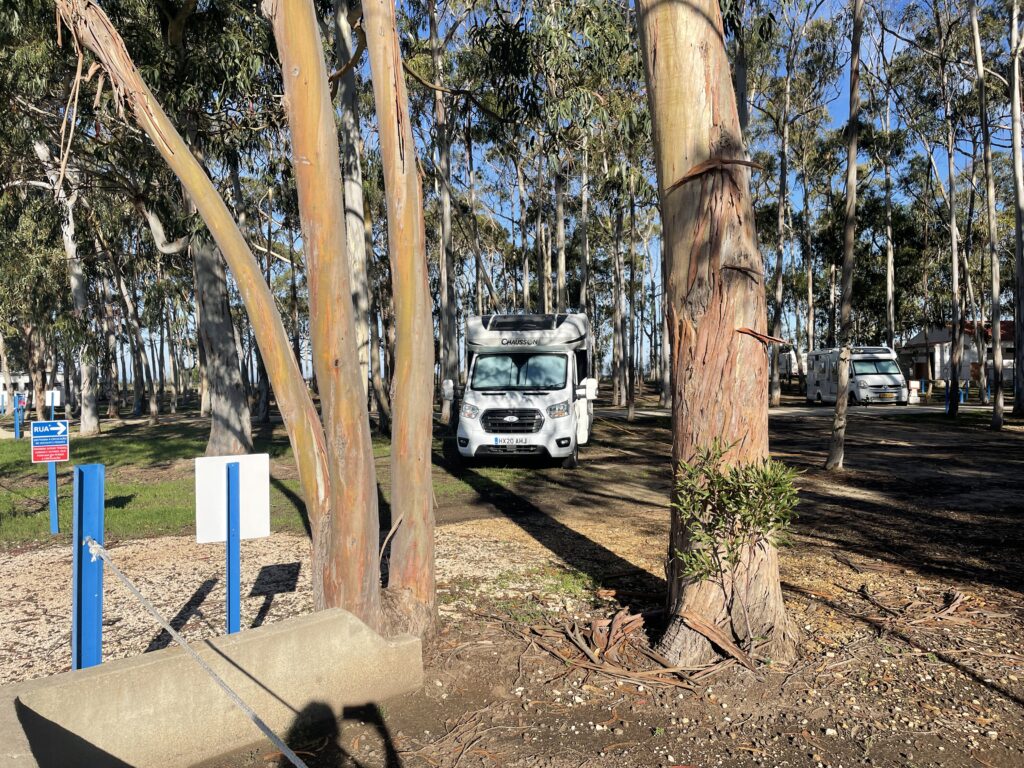
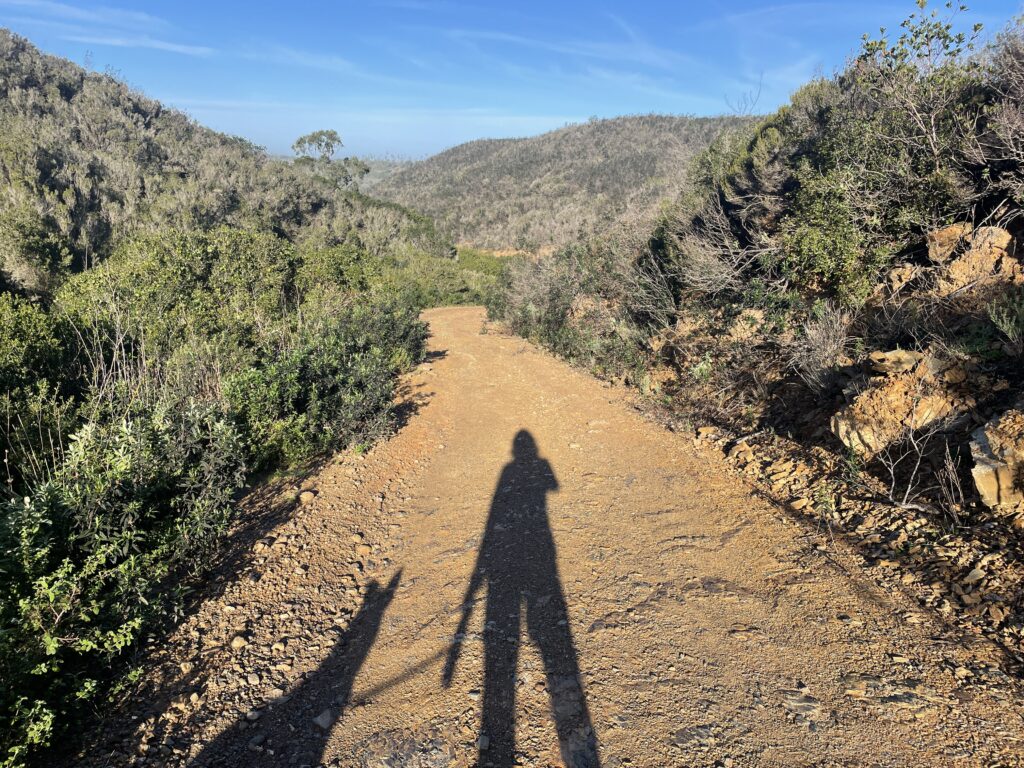
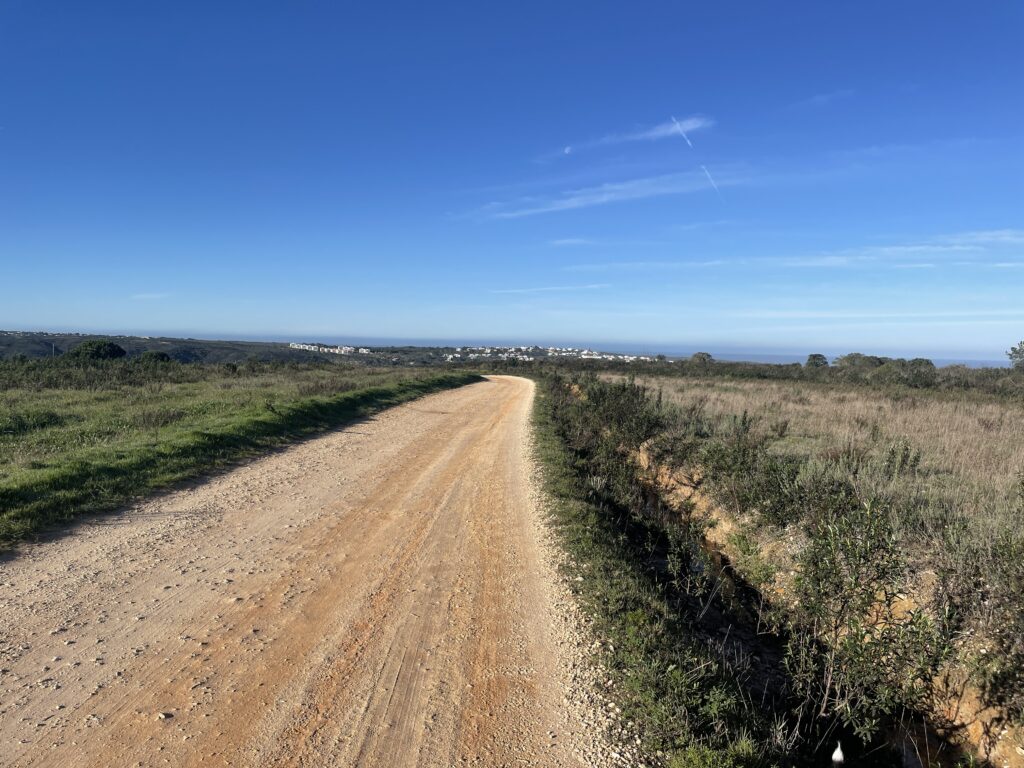
Our drive the next day continued down the N210 – and I must give that road a mention. We picked it up from Sines and followed it all the way south and it has been a pleasure to the eye to drive. Now we noticed that the scenery is changing and the area is becoming more developed. There are more luxury looking villas nestled in the hills, advertising in the towns for tourists, more cafes and restaurants that might appeal to expats more than locals.
BANG – we had reached the southwest Portugal and took a left to head along the N125, which is the coastal road along the Algarve. Things changed rapidly and it had a very different feel about it.
The road was dotted with advertising boards for beaches, resorts and tourist attractions like water parks, boat trips, surf schools etc, the roads were much busier with cars and motor homers and there were endless roundabouts!
We drove along the coast for about 40 mins and then inland to a town called Silves. We chose this place as it had good reviews with Motor homers and it had 3 commercial Aires. There are less places to park up in the Algarve, they get busy with long terms stays and all the Aires charge.
We found a day parking spot at Silvas but we could not get into any of the Aires for the night as they were all full. So we had lunch in the town, did a Lidl shop and thought we would come back to explore properly when Linda and Sid arrived.
I then came across a campsite that is still under construction but taking in vans for just 6 euros for the night. This was ideal for us as we didn’t want electric just somewhere safe to park up.
It turned out a very interesting site, a bit of an Oasis in the middle of nowhere with an ‘honesty café’, a gym, yoga room, natural swim pool, volley ball beach and some interesting accommodation cabins.
The owners lived on site in a stunning villa and were super friendly and it looked like it would be a great place to stay in the summer when it is finished.
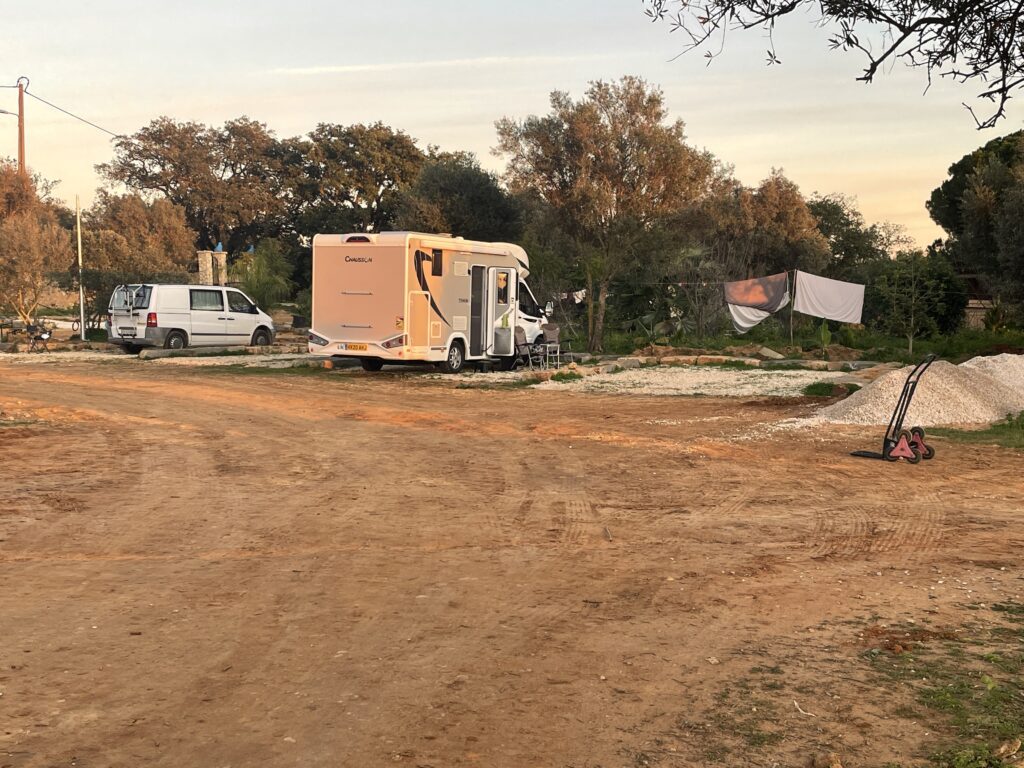
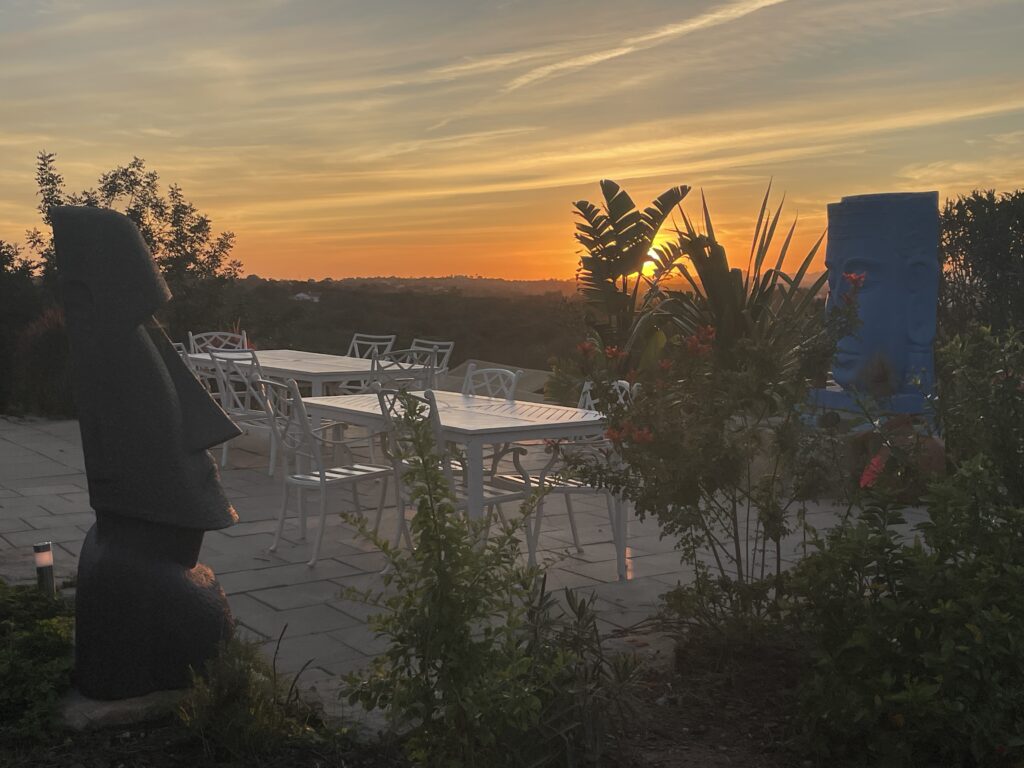

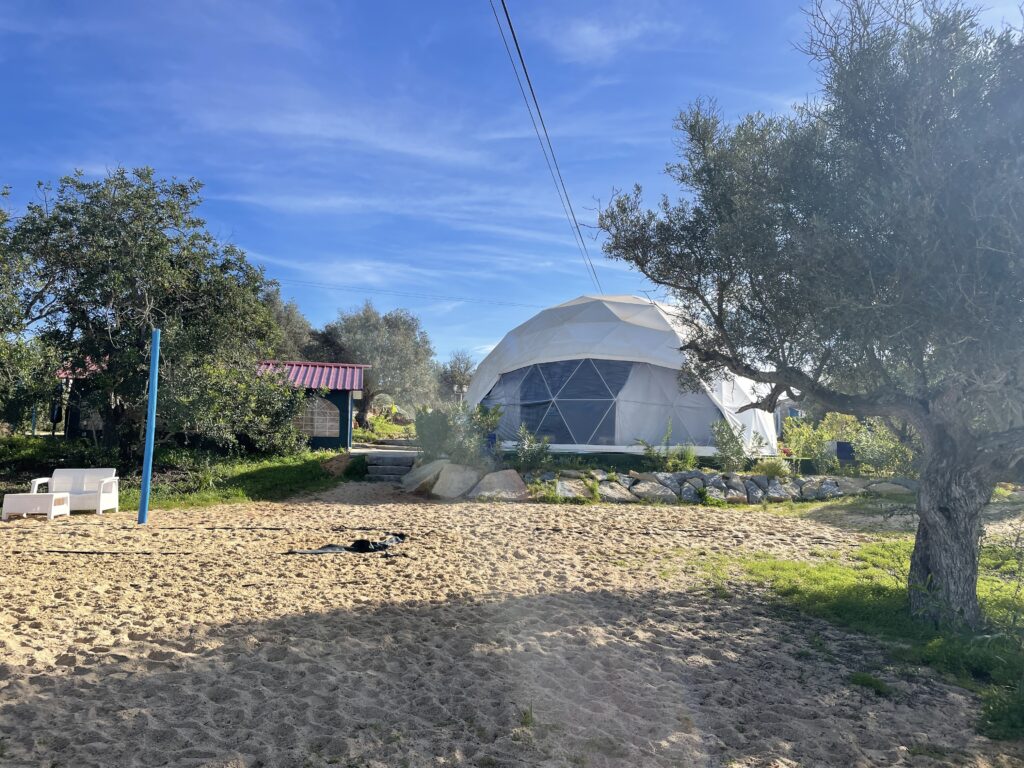
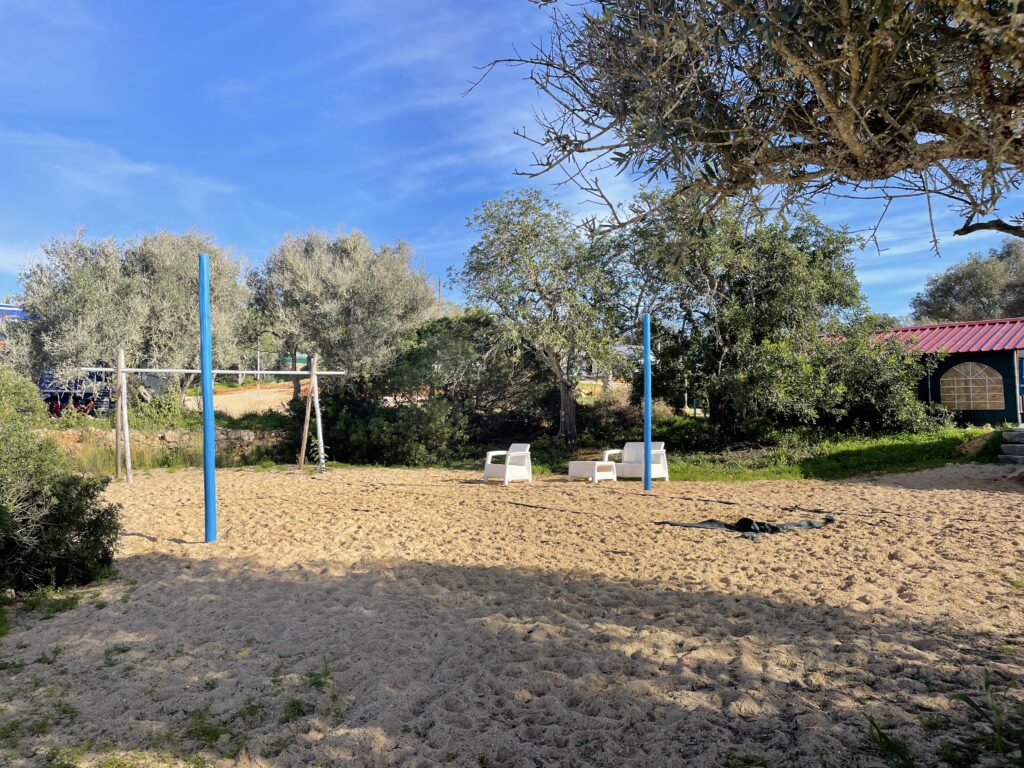
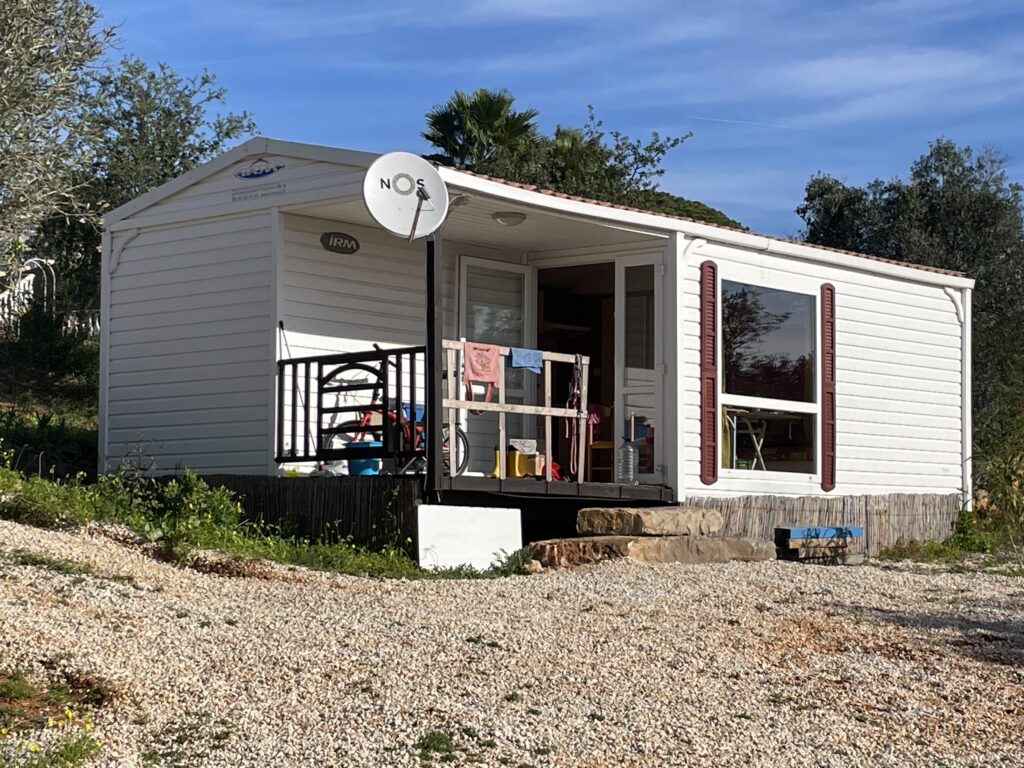
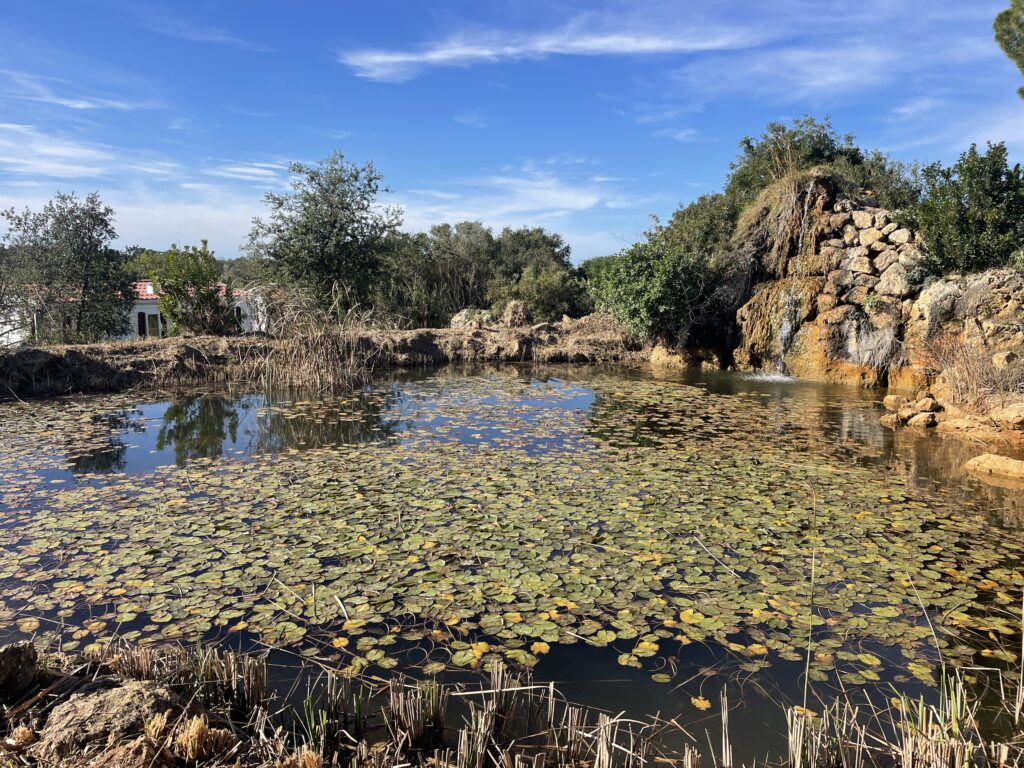
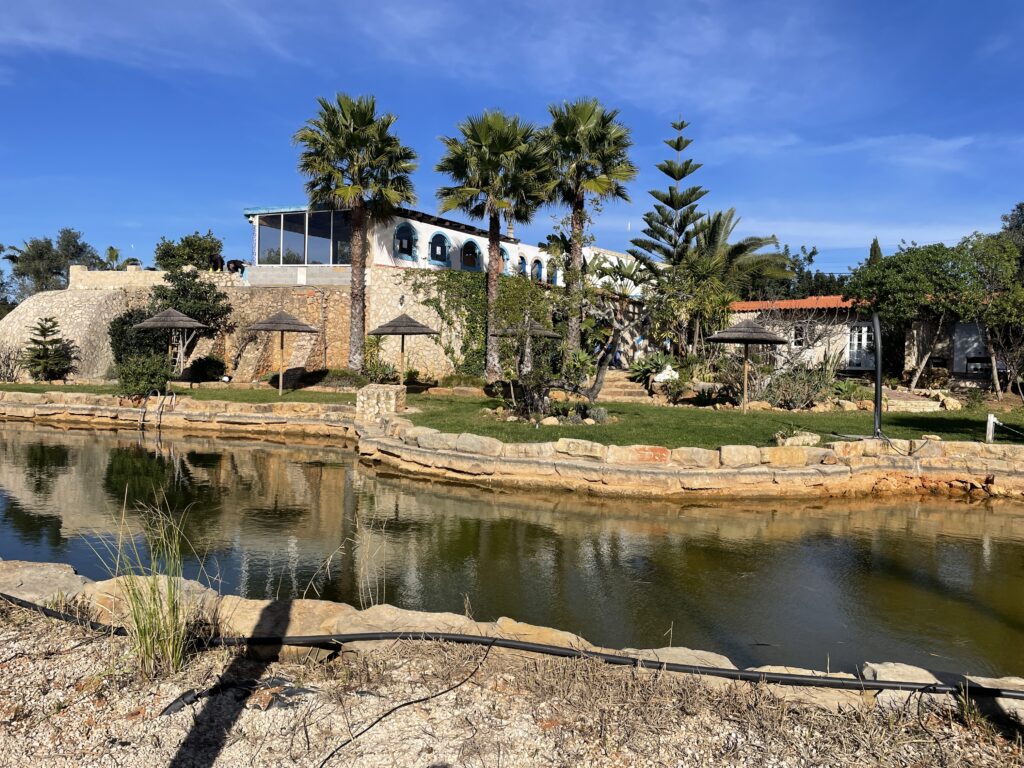
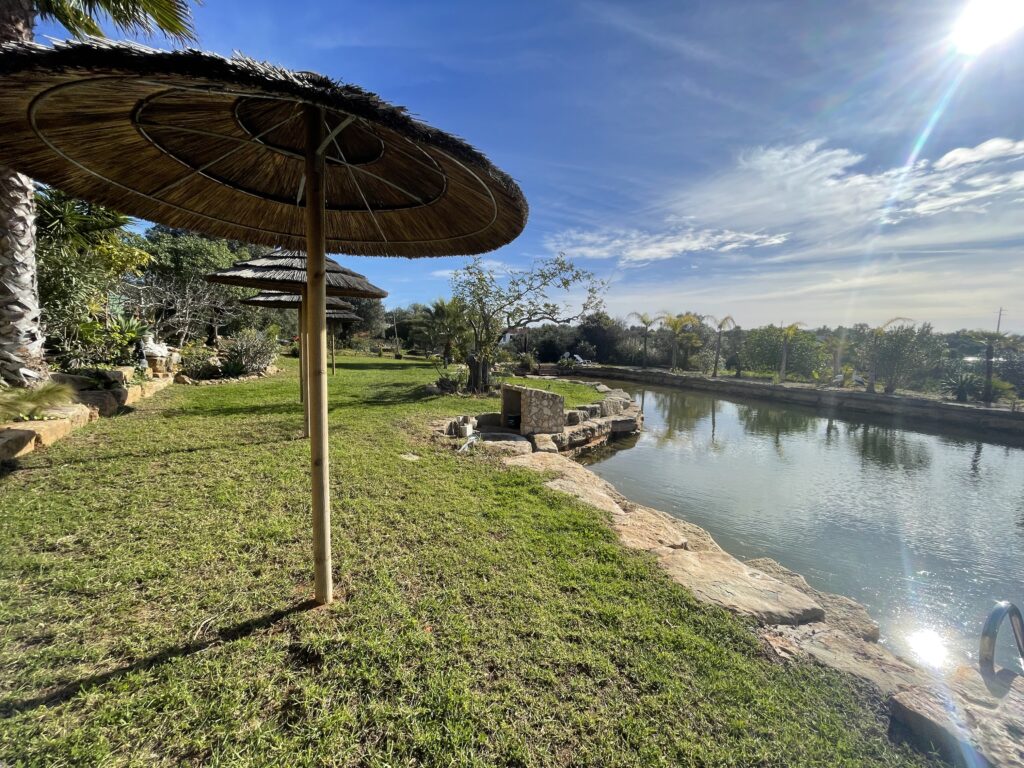
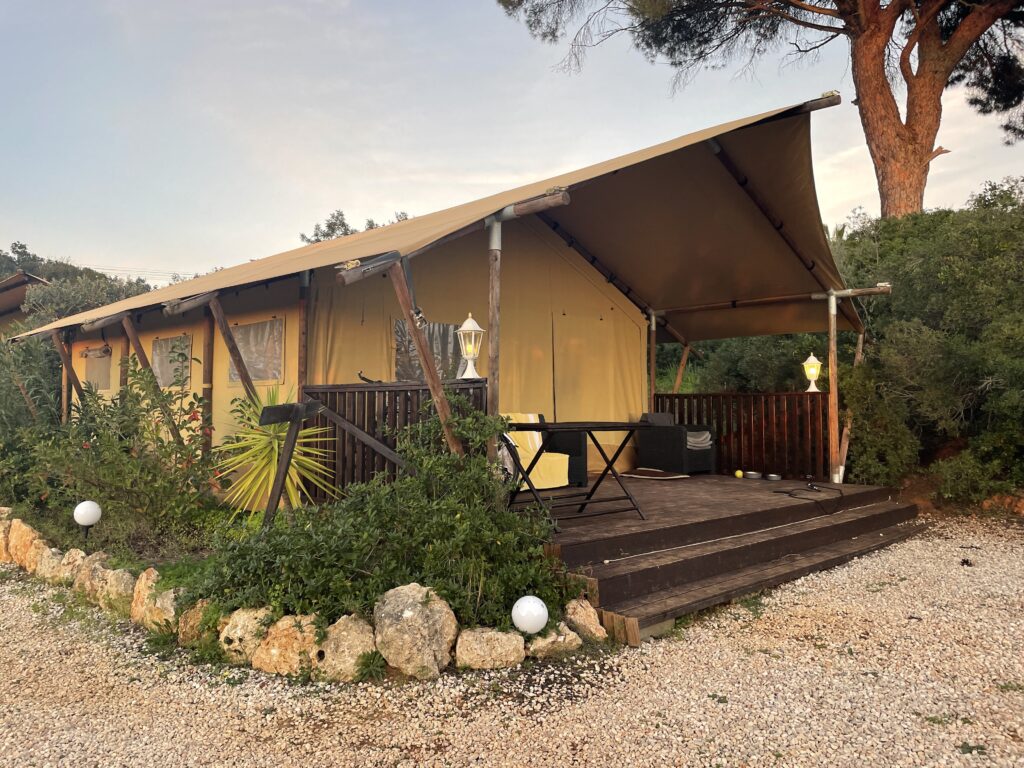
The following morning we were headed to Portimão to stay in a villa with Linda and Sid from Dorset.

4 Responses
Wonderful pictures and descriptions! I was very excited to read about the volcanic area as it looks so interesting.
Portugal looks lovely at this time of year… great pictures and info about your ventures… it’s been very cold and icy in Dorset, so you are definitely in the best place 😀
It all looks absolutely amazing Lucie. So privileged to be able to follow your travels . Have only been to the Algarve once, including Silves, and would definitely love to go back . X
That campsite for 6 euros looked amazing! As did the incredible beach at Praia da Amoreira – wow what a find! xx